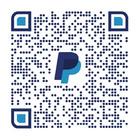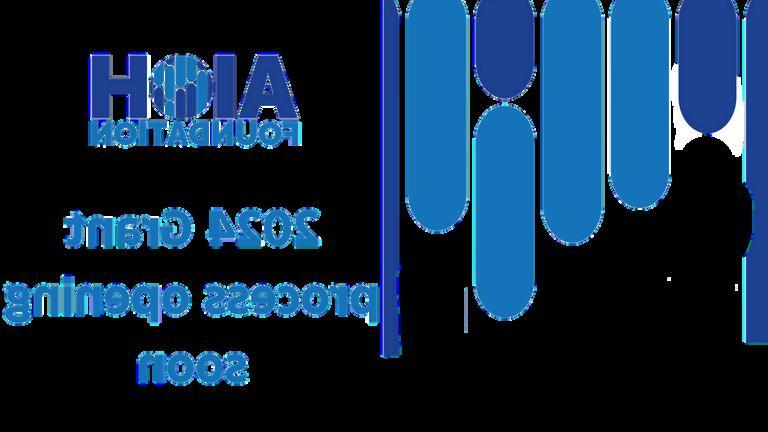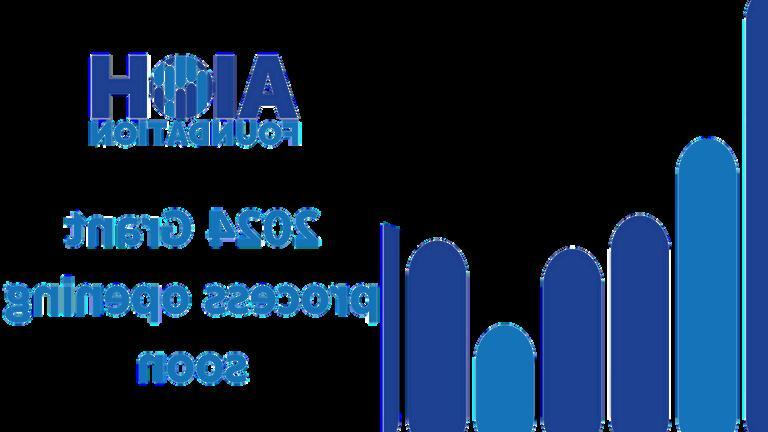FILTER 2025 Quarter two


Welcome to the Q2 Edition of The Filter!



Welcome to the Q2 Edition of The Filter!
We have some exciting changes happening at the AIOH, and The Filter Magazine is no exception.
In this edition, hear more about Project Beyond 45 from our President, Aleks Todorovic, get caught up in the momentum of AIOH 2025, and meet some of our students who are dedicated to working towards a healthier future. Find out more about the danger of lead fumes in welding, check out what is happening in Occupational Hygiene internationally, and read about the ‘Wicked Problem’ of Hexavalent Chromium in exhaust systems. We also have some brand-new sections coming to The Filter, including Expert Interviews, Unusual Jobs, Student Spotlight and (gulp ) Unpopular Opinions.
Make sure you look out for each of these as you peruse our expanding offering. Details on how to submit your article are also detailed in this edition, and we are looking forward to receiving your stories. If you have any questions about how or what you can submit, please email marketingchair@aioh.org.au.
Until next time, stay safe, and keep making our workplaces healthier!









TheTeamChair: Kelly Jaunzems
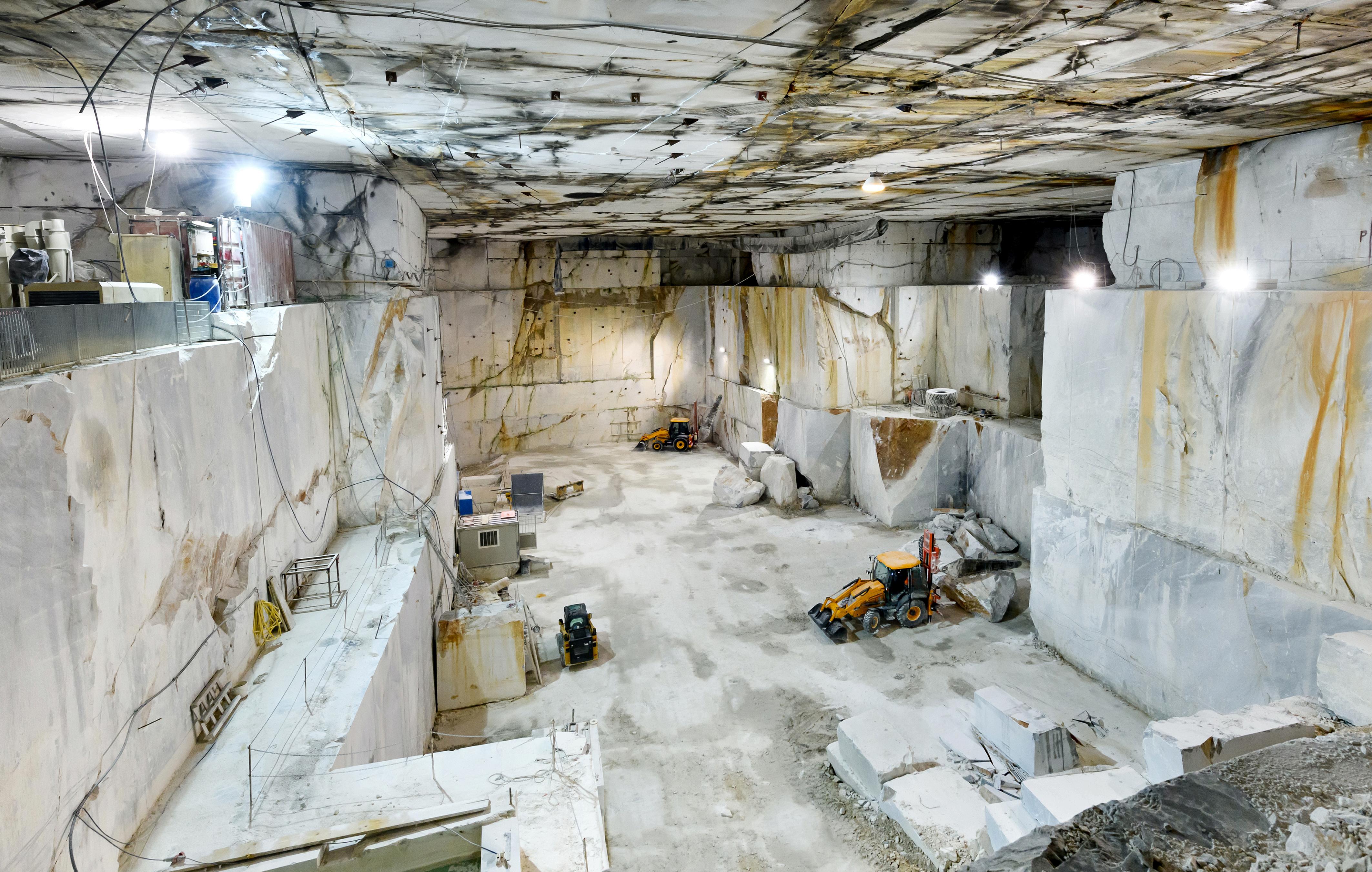
Winners of 2024 Poster Prize winners agree with the AIOH Workplace Exposure Assessment Committee on RCS
Congratulations to the AIOH Workplace Exposure Assessment Committee (WEAC) for their insightful and significant work in the production of the position paper Respirable Crystalline Silica and Occupational Health Issues, released late last year. It was reassuring to read that the conclusions of the position paper were in line with the independent research and findings at the Perth Conference of the AMCOSH best conference electronic poster award winners, Pieter Bertier and Steven Verpaele: An evaluation of validation schemes for the direct-on-filter X-ray diffraction method for analysis of respirable crystalline silica.
Although an abstract of the poster can be found in the conference proceedings (Poster 26, p. 235), this abstract did not include the findings and extra detail that was presented at the conference. In particular, one of the take-home messages of the electronic paper included the statement: “This implies that for typical samples of 1 m of air, compliance cannot be demonstrated analytically for OELV below 50 µg/m ” . This accords well with the findings of the AIOH WEAC independent position paper. 3
3
I was surprised to find at the conference that some hygienists were sceptical of the conclusions of the AIOH WEAC RCS position paper, however, the findings of this independent laboratory research should provide reassurance to these members. I expect a full copy of the winning poster is accessible through the AIOH 2024 Conference scientific committee.
Geza Benke, PhD Monash University
Hamish Rae, a Senior Occupational Hygienist at GCG Health Safety and Hygiene, recently published a case study regarding the presence of Hexavalent Chromium VI within exhaust systems of mining trucks The full case study can be found here
Calcium chromate is a powdery, yellow coloured toxic compound that is used as a corrosion inhibitor and to depolarise batteries. It is produced when chromium is presented with an oxidant (such as air or water) at a high temperature ( 200°C or above). This substance contains hexavalent chromium CrVI, which is genotoxic, listed both as an IARC Group 1 carcinogen and a non-threshold genotoxic carcinogen.
Exhaust systems on large mining trucks typically have components manufactured from stainless steel, which contains chromium in some sections to strengthen the steel. Truck’s exhaust systems (particularly with turbos) can reach temperatures of greater than 200°C Lagging blankets can be wrapped around the exhaust system for insulation, and are usually made of glass fibre. Glass fibre lagging blankets are produced by melting a range of compounds, including calcium oxide. When combined with the chromium containing steel when exhaust temperatures reach 200°C or more, calcium chromate can be produced.
To determine risk to workers conducting exhaust rebuilds, monitoring was undertaken for each task with the purpose of determining exposures by task in addition to calculating the time-weighted average of a full shift Results in this case study indicated low full shift results, however specific tasks had the potential to expose workers to moderate airborne concentrations.
To reduce the risk of hexavalent chromium exposures in the workplace the case study recommends the following:
Preventing the occurrence of calcium chromate by using insulation that doesn’t include calcium (or another oxide such as sodium).
Make sure that exhaust components are not cleaned using power tools or dusty methods
Introduce an assessment protocol:
Is this an at-risk component? Do I need to put PPE to do the initial assessment?
Is there any yellow discolouration or powdery deposit present?
Use an initial screening tool – use a hex check colorimetric indicator kit. There are a couple of different types available, for example, a swab kit similar to a lead testing kit The indicator changes colour if there’s hexavalent chromium present.
The outcome of the above steps points to what further controls may be required.
Develop a procedure for cleaning and disposal of exhaust components.


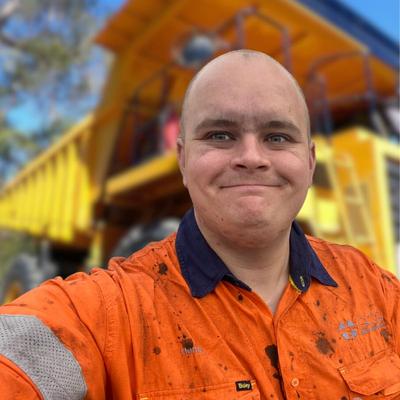
There have been a number of novel and interesting re from the Annals of Work Exposures and Health (Anna Hygiene (JOEH). Four articles were provided by AIOH members (links may not be open access and can require payment or login to the specific journal). If you are publishing articles in a scientific journal please get in touch with the communications and marketing team as we may be able to include it our future editions
Debroah C Glass & Ryan F Hoy:
Annals Vol 69, Issue1, 2025.


Congratulations to the researchers and thank you for advancing our knowledge.
The lead up to the artificial stone ban in Australia.
An editorial piece on the artificial stone ban in Australia.
Louisa Johnson & Kelly Johnstone:
A study of worker isoflurane exposure levels in Australian veterinary workplaces. JOEH Vol 22, Issue 3, 2025.
“This study aimed to evaluate the effectiveness of recommended hazard controls for the management of isoflurane exposure to veterinary staff performing regular anesthesia procedures in equine and small animal settings.”
Geoff Pickford & Joanna Szymanksa:
An alternative to the HSE/NPL Mark II Phase Contrast Test Slide for airborne asbestos fiber analysis laboratories.
JOEH Vol 22, Issue 5, 2025
“The report looks at an alternative to the HSE/NPL Mark II Phase Contrast Test Slide. It proposes an alternative in the Pickford Test Slide certified by the Environmental Analysis Laboratory of Southern Cross University to be the equivalent of the HSE/NPL Mark II Phase Contrast Test Slide. The authors disclose that PhaseSlides is the sole initiator, patent holder, manufacturer, and marketer of the Pickford Phase Contrast Test Slide.”
Kate Cole, Renee N Carey & Tim Driscoll:
The future burden of silicosis and lung cancer among tunnel construction workers in Queensland.
Annals advance copy, April 2025.
“This paper highlights the likely future burden of disease, the need for case-finding and better control measures to reduce RCS exposure in this high-risk cohort.”

ven Gjengedal & Torunn K Ervik:
Measurements of dust and respirable crystalline silica during indoor demolition and renovation.
Annals, Vol 69, Issue 1, 2025.
“This study determined exposure to dust and respirable crystalline silica in the renovation industry. Substantial personal exposure levels were uncovered for demolition workers, as well as other workers at indoor renovation sites.”
John E Lindberg, Rebecca J Gore, Susan R Sama, Catherine J Galligan, David Kriebel, Pia K Markkanen, Ryan F LeBouf & Mohammed Abbas Virji:
Respiratory quaternary ammonium and volatile organic compound exposures experienced by home care aides during residential bathroom cleaning using conventional and green products.
Annals Vol 69, Issue 2, 2025.
“This paper shows that respiratory exposures to quaternary ammonium compounds (QACs) aerosols were generated during typical household bathroom cleaning with a ready-to-use QACsbased cleaning and disinfecting (C&D) spray product. Airborne exposure to QACs is often overlooked, however both airborne and dermal exposures should be controlled when spray cleaning with a QACs-based product. Many respiratory exposures to volatile organic compounds are generated during spray cleaning with ready-to-use conventional and green C&D products.”
Samantha Hall, Jade Sumner, Graeme Hunwin, Samuel Martell, Ian Pengelly, Veronica Brown, James Staff, James Forder & Delphine Bard: Desktop 3D printers in the workplace: use, emissions, controls, and health.
Annals Vol 69, Issue 3, 2025.
“Desktop three-dimensional (3D) printers used in businesses and educational institutions are generally of an unenclosed design. Using a survey, this study described the varied types of 3D printers and use conditions, and reported injury and illness. At 2 sites, measured exposures were not found to be in excess of exposure limits, but some workers reported health symptoms. The information gained in this study provides context for how 3D printers are used, particularly in educational institutions, and can inform the selection of exposure control measures.”

Ruby Vermoolen, Remy Franken, Tanja Krone, Neeraj Shandilya, Henk Goede, Hasnae Ben Jeddi, Eelco Kuijpers, Calvin Ge & Wouter Fransman:
The Nano Exposure Quantifier: a quantitative model for assessing nanoparticle exposure in the workplace
Annals Vol 69, Issue 3, 2025.
“This paper reports on the development of a user-friendly, quantitative, and evidence-based model, the Nano Exposure Quantifier (NEQ), for assessing manufactured nanomaterial exposure in the workplace. Due to its tiered approach, the model is well suited to assess the exposure risks and thus help implement the stepwise approach of the European Commission’s Safety and Sustainability by Design framework.”
Barbara M Alexander, Pamela S Graydon, Mirle Pena, H Amy Feng & Bryan R Beamer:
Hazardous exposures and engineering controls in the landscaping services industry.

JOEH Vol 22, Issue 3, 2025.
“This field study of workers in the landscaping services industry documented the occupational exposures of 80 participants at 11 varied worksites to noise, CO, respirable dust, and RCS using personal breathing zone sampling.”
Kayna Hobbs-Murphy, William J Brazile, Kristen Morris & John Rosecrance:
Demographic differences in facial anthropometric data from 3D scans and implications for respirator fit
Annals Vol 69, Issue 4, 2025.
“This study is the first to utilize a large sample of 3D facial scans to assess demographic differences in facial dimensions related to respirator fit. The findings highlight significant variations in 3D facial measurements based on gender, race/ethnicity, and age, underscoring the need for more inclusive respirator fit models. This research offers practical implications for workplace safety by contributing to better-fitting personal protective equipment for diverse populations.”
Kimberly R Anderson, Perri Callaway & M Abbas Virjii:
Evaluation of chemical exposures generated from n-free nail polishes.
JOEH Vol 22, Issue 6, 2025.
“This study highlights that despite industry claims, n-free polishes may still contain chemicals associated with negative health effects and that more studies are necessary to understand the true chemical exposures of nail salon workers.”


Gotaspicytakeonhowthingsshouldbedoneintheworldofoccupationalhygiene?
OurnewUnpopularOpinionssectionisallaboutopeningthefloortobold perspectives: thekindthatsparkdebate,challengeassumptions,andpushthe boundariesoftraditionalthinking.
We’relookingfor:
Honest,thought-provokingideasthatchallengethestatusquo Topicsthatgetpeoplethinking(ortalking!) Contributionsthatarerespectfullywrittenbutcourageouslyputforward
Howtosubmit:
ShareyourUnpopularOpinionin300wordsorless Telluswhyyoubelieveit
Letusknowifyouwanttobenamedorremainanonymous Submitbeforethequarterlycut-offfortheeditionyou’dliketobefeaturedin:
Q1–1March
Q2–1June
Q3–1September
Q4–1November
Senditto:marketingchair@aioh.org.au
Stirthepot.Sparkthediscussion.Bebold(butbekind).

WorkSafe is reminding employers and employees about the serious risks involved with transporting dangerous goods in tool of trade (TOT) vehicles. An employee has been seriously injured by an explosion in a TOT vehicle. The employee was carrying flammable gas cylinders which may have caused the explosion:
administrationandschemedelivery policydevelopments,and legislativeamendments
SafeWorkAustraliaproducesthisreportevery2yearsincollaboration withAustralianandNewZealandworkers’compensationauthorities
While the LTIFR calculator provided useful insights into the relationship between poor WHS and productivity, it had limitations when used alone to measure overall WHS performance. In response, Safe Work Australia engaged in extensive consultation to explore alternative methods that enable users to more accurately assess, measure, and report on WHS performance.

EXPLORE THE NEW WHS DATA REPORTING TOOLS ON SAFE WORK AUSTRALIA’S DATA WEBSITE

Drawing on Safe Work Australia’s National Dataset for Compensation-based Statistics and ABS Census data, a new WHS profile of the nursing, care, and support workforce has been published. This profile highlights the common risks workers in these sectors face in the course of their duties. These insights can support PCBUs and workers in better understanding and managing the specific risks associated with their industry.

SafeWork SA has launched a two-year compliance campaign targeting businesses involved in lead risk work to ensure they are meeting legal obligations and protecting workers from the serious health risks associated with lead exposure. Inspectors will conduct audits and site visits in response to lead risk notifications, with enforcement action taken where non-compliance is found

The workshops are designed for managers and supervisors to build foundational skills in identifying, assessing, and managing risks to psychological health and safety. Aligned with the Mentally Healthy Workplaces Toolkit, the workshops are split into two modules: Psychological Health and Safety, which covers relevant legislation, hazard identification, and mental health promotion; and Early Intervention and Supporting Recovery, which focuses on recognising warning signs, having supportive conversations, and managing recovery in the workplace. Sessions are available both inperson in Brisbane and online via Zoom, with flexible module selection and no prerequisites. Workshops are free but have limited capacity, so early registration is encouraged.

The AIOH have partnered with GCG TechLab to offer a series of awareness courses on the fundamentals of dust, mould, and mould remediation for cleaners. All courses are 100% online.
About this course

Dust occurs naturally and from man-made activities like driving on a dirt road or sawing a piece of timber. In most workplaces, dust is considered problematic and a hazard, especially as dust can impact your health. This course is designed to give you a fundamental level of knowledge and understanding of dust. You will learn what dust is, how to identify dust and the risks associated, the negative health effects of dust, and the controls use to manage the risks associated with dust.
AIOH Mould Cleaning for Cleaners
About this course
Mould is everywhere It's a naturally occurring organism that plays an important role in nature's ecosystem
Low levels of mould can virtually be found everywhere, even in the most sterile rooms Mould may grow indoors in wet or moist areas lacking adequate ventilation, including walls/ wallpaper, ceilings, bathroom tiles, carpets, insulation material and wood
AIOH Mould Awareness
About this course
If moisture accumulates in a building mould growth will often occur. Mould affects people differently depending on their health and the type of mould. It can cause nasal and sinus congestion, hay fever, sore throats, headaches, eye irritations, body rashes and other aches and pains. Mould not only has the potential to cause health problems, but it can also cause damage to the buildings and surfaces it inhabits. AIOH's Mould Awareness online training module is designed to help learners identify mould, understand the conditions that can promote mould growth and develop an awareness of the steps for safely managing the presence of mould.
WorkSafe has laid the first charges under Victoria’s engineered stone ban, prosecuting bathroom wholesaler Fienza Pty Ltd for allegedly breaching new regulations. The company faces one charge for directing or allowing a worker to cut engineered stone benchtops at its Epping warehouse in July 2024, and 21 charges for supplying engineered stone products across multiple locations despite the ban
A worker sustained serious crush injuries after a 1.5-tonne bundle of galvanised pipe fell during a truck-loading task. Preliminary investigations suggest the worker was positioned on the opposite side of the truck while a forklift was operating. While inquiries are ongoing, this incident highlightsseveralcriticalsafetyissuesrelatedtoloadingandunloadingpractices.
This incident underscores the need for clearly defined safe systems of work, physical barriers to separate people from plant, competent supervision and training, and higher-order controls such asengineeringmodificationstotrailerstopreventworkerexposure.
Toreadthealertinitsentiretyclick here.


The prohibition on manufacturing, supplying, processing, or installing engineered stone came into effect on 1 July 2024 The case is scheduled for mention at Heidelberg Magistrates’ Court on 17 June 2025 To read the alert in its entirety click here Incident:FatalIncidentHighlightsRisksinEWPLoading

A worker has tragically died after being ejected from an elevated work platform (EWP) that fell during loading onto a tilt-tray truck in West Melbourne. This incident, currently under WorkSafe investigation, underscores the significant dangers involved in the delivery and collection of EWPs including overturning, uncontrolled movement, and improper operation. Employers are reminded of their duty to implement and maintain safe systems of work, ensuring operators are trained and follow manufacturer instructions for loading and unloading Use of appropriate equipment, such as drop-deck trailers and safety observers, is strongly recommended to reduce the risk of serious injury or death. To read the alert in its entirety click here.
SafeWork NSW is urging workplaces in flood-affected areas to prioritise safety as cleanup begins Common hazards include contaminated water, broken glass, unstable surfaces, damaged electrical systems, and potential asbestos exposure especially in buildings constructed before 1990. Workplaces should thoroughly assess risks, follow emergency service advice, and ensure workers have proper training, PPE, and rest breaks. The five-day asbestos removal notice has been waived to allow for urgent cleanup, but only licensed professionals should handle suspected asbestos. Employers must ensure all tasks are well-planned and risks controlled to protect workers' health and safety during recovery.
To read the alert in its entirety click here.
SafeWork SA is warning DIY home renovators to be cautious of asbestos, which remains present in thousands of South Australian homes, especially those built or renovated before the late 1980s. Even simple tasks like drilling can disturb asbestos materials and release deadly fibres. Although asbestos use was banned in Australia in 2003, removal notifications have increased significantly, with more than half from residential properties. Asbestos-related diseases cause about 4,000 deaths annually in Australia, making professional removal strongly recommended. SafeWork SA urges homeowners to avoid disturbing asbestos, use licensed removalists for safe handling,anddisposeofasbestoswasteproperlytoprotecthealthandsafety.
Toreadthealertinitsentiretyclick here.


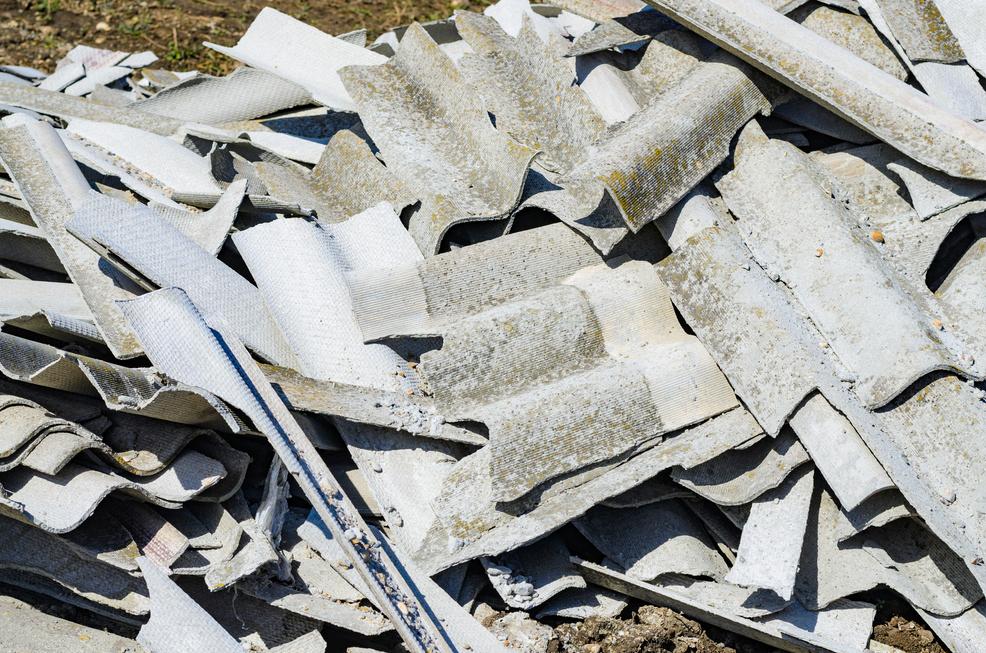

Occupational hygiene often takes professionals to unexpected places — from the depths of underground mines to the peaks of remote mountains. Sometimes the fascination lies in the nature of the contaminants being investigated or the scale of the work, while other times, it’s the location itself that makes the job unforgettable.
In early 2020, just as the world was beginning to grasp the implications of the COVID-19 pandemic, I was fortunate to undertake one of the most memorable assignments of my career — a rapid deployment to Antarctica to carry out asbestos inspections at two Australian research stations.
The journey began in late January aboard the Aurora Australis, embarking on its final voyage south before retirement. The mission was designed to be a tightly coordinated 15-day round trip: 11 days at sea, a short stop at Davis Station, followed by a quick inspection at Casey Station, before returning to Hobart in mid-February.
The scope of work was straightforward — an update to the asbestos registers at both stations and a post-project inspection of a removal job completed at Davis during the winter of 2018. However, "straightforward" takes on a new meaning in Antarctica. In subzero temperatures and extreme conditions, tasks that typically take an hour — such as a visual clearance — are often allocated a full day to ensure safety and accuracy.
To ensure a job is completed, as it is not an easy task to get back to site if you need additional information. This was quickly evident when onsite and discussing potential work that an Occupational Hygienist could complete whist at the Research Station, opportunistic jobs such as Indoor Air Quality or noise surveys were potential options

but accessing the right equipment was not an option. These risk assessments became a qualitative assessment and review of controls rather than the data based assessment most of us really appreciate.
As with most things during the early months of the pandemic, the best-laid plans were quickly upended. Weather conditions delayed our progress, and the evolving COVID situation added layers of complexity to the logistics. An unexpected three-day delay at sea extended my stay at Davis indefinitely, as poor weather made the flight to Casey impossible until conditions improved.
Despite the challenges, the trip was a powerful reminder of the adaptability required in occupational hygiene — and of the once-in-a-lifetime opportunities this career can provide.
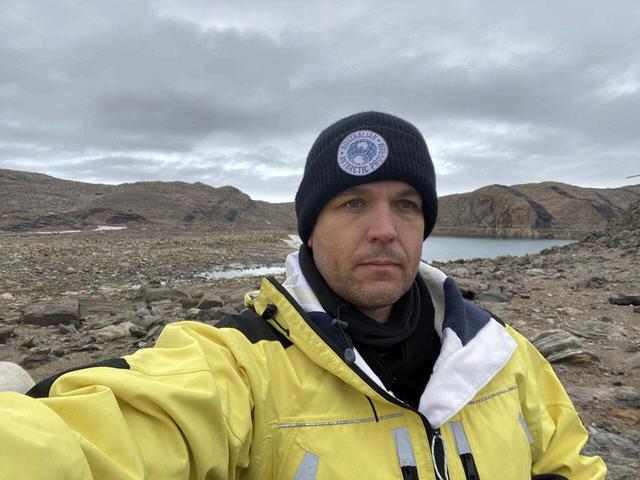


An opportunity exists for an experienced Occupational Hygienist to join the team at our Dawson Mine on a full-time permanent basis With your diverse capability in communicating with a range of stakeholders and high level of planning and problem solving, you will add value through your commitment to Health & Safety. You will provide technical advice and support to proactively manage all site-based occupational hygiene risks and opportunities. - Full position details here
SafeWork NSW Inspectors apply their industry knowledge, experience and training to work in partnership with NSW workplaces to assist them to meet and maintain work health and safety standards so that workers return home safely. Full position details here

This role ensures compliance with updated legislation while building internal expertise in health and hygiene You will play a pivotal part in positioning our company at the forefront of health and hygiene standards. Your work will involve providing technical advice and developing robust internal procedures to manage workplace health and hygiene hazards effectively. This full-time role can be based at our offices in Brisbane, Melbourne, North Sydney, or Perth We proudly foster an inclusive and supportive environment, making us an attractive choice for female candidates Full position details here

Shape your career by joining Alcoa’s Vacation Student program! Based in WA at our Pinjarra refinery, you’ll have the chance to put your university knowledge into practice, propelling you toward a career path that exceeds your wildest expectations. Throughout your 12-week paid summer placement, you’ll experience professional growth, technical expansion, and become an integral part of our vibrant community, where inspiration and daily challenges await. Full position details here
In response to emerging health risks and high-profile safety incidents, significant reforms have been introduced to Australia’s work health and safety (WHS) framework. These updates reflect a growing emphasis on both traditional hazards and emerging psychosocial risks.
From 1 September 2024, amended model WHS Regulations introduced stricter controls on crystalline silica substances. These regulations mandate detailed risk assessments, air monitoring, and a silica hazard register for all workplaces handling materials with 1% or more crystalline silica. The changes aim to combat the rising cases of silicosis linked to engineered stone and similar materials.
Addressing the mental health toll of work, the Managing Psychosocial Hazards at Work Code of Practice 2024 was adopted by federal and most state regulators in November 2024, setting clear expectations around identifying and controlling stress, fatigue, bullying, and traumatic exposure. While adoption is nationwide While adoption is nationwide under the model laws, implementation timelines vary across jurisdictions.
From 1 July 2024, industrial manslaughter offences came into effect in multiple states, including South Australia. These laws impose penalties of up to 25 years' imprisonment for individuals and $18 million fines for corporations found responsible for workplace deaths due to gross negligence.
Further reinforcing health protections, amended lead regulations from March 2025 now define lead risk work using tighter blood lead level (BLL) thresholds—5 µg/dL for women of reproductive capacity and 20 µg/dL for others—prompting mandatory health monitoring and notification. Looking ahead, SafeWork NSW will be replaced by an independent WHS regulator on 1 July 2025, aimed at improving enforcement and oversight in the state.
These updates collectively signal a shift toward more proactive, enforceable, and health-focused WHS regulation across Australia, demanding increased vigilance and compliance by employers and PCBUs.


This video interview with Kiam Padamsey discusses his PhD project ‘Smoke exposure profiles of bushfire fighters in the south-west ecoregion of Western Australia’. He has contributed to numerous articles regarding hazardous exposures firefighters face in their work. Through his expertise and research, he highlights specific areas of concern with smoke exposure and informs viewers what action needs to be taken.
If you would like to learn more about his findings on this topic and other related firefighter exposures, visit:
https://www.ecu.edu.au/schools/medical-and-health-sciences/ourstaff/profiles/lecturers/kiam-padamsey
Or contact Kiam at: k.padamsey@ecu.edu.au

Dr Kiam Padamsey is an epidemiologist whose research spans both occupational and general population health. His work focuses on harmful exposures in high-risk settings, particularly the health impacts of bushfire smoke and other hazards faced by firefighters. He also contributes to broader public health research, applying epidemiological methods to understand and address major health issues affecting communities.
He teaches across public health programs, with a focus on building students’ understanding of epidemiological principles and how they apply to real-world health challenges. Kiam is passionate about using research to inform practice and policy, and he brings this perspective into both his teaching and supervision.

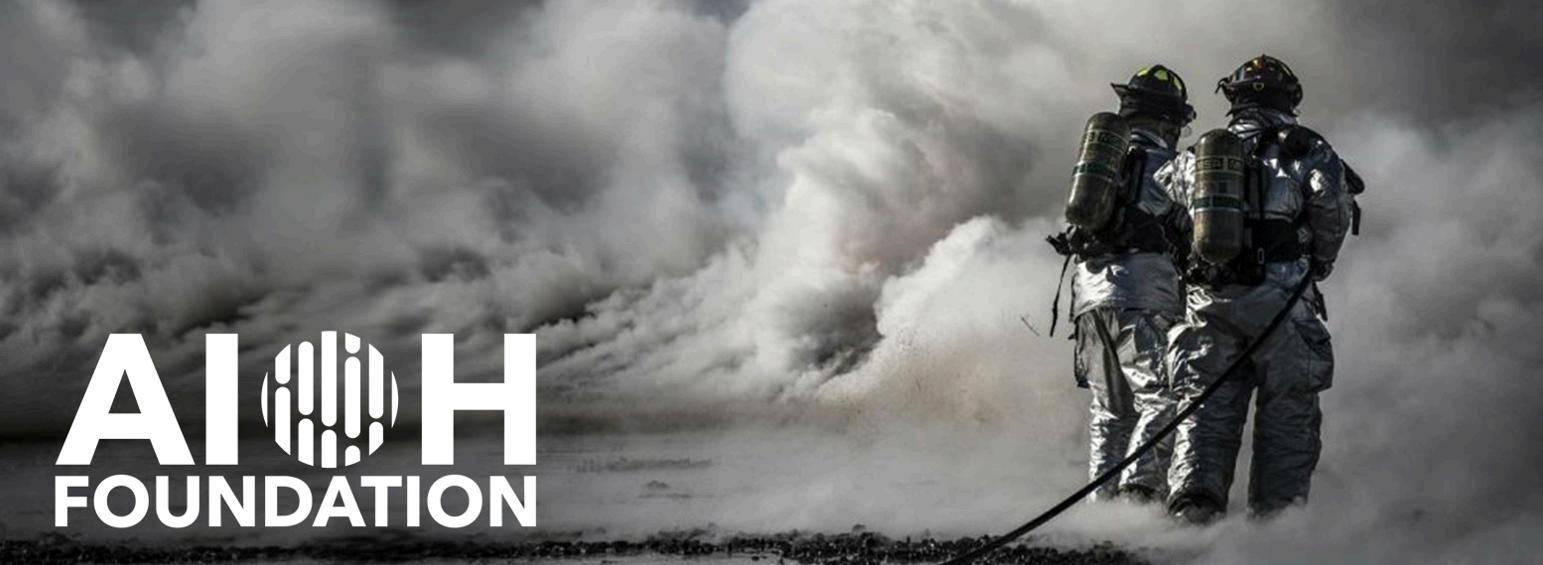
The AIOH Foundation is dedicated to advancing the science and practice of occupational hygiene in Australia. Established in 2016, the Foundation aims to reduce the burden of occupational disease by supporting high-impact research, practical education, and targeted awareness initiatives.
Under the Foundation’s 2022–2025 Strategic Plan, the mission is clear: to promote the prevention of occupational illness through the principles of occupational hygiene. In turn, the Foundation will drive positive and sustainable change towards healthier workplaces.
The Foundation's strategic objectives focus on:
Funding applied research that fills knowledge gaps and informs best practice.
Educating the public and employers about risks and control strategies.
Raising awareness of occupational hygiene in emerging and under-recognised industries and those industries where workers are over-represented in occupational disease data in Australia.
Collaborating with the wider exposure science community of occupational health nurses and practitioners, epidemiologists, occupational physicians, ergonomists, toxicologists, safety engineers, safety professionals, health physicists and health risk communicators to maximise impact.
At the heart of this work is a belief that no one should become ill because of work a principle that continues to guide the Foundation’s priorities and partnerships.


The AIOH Foundation is governed by a voluntary Board of Directors who bring seasoned expertise in occupational hygiene, regulatory compliance and research:
Jackii Shepherd (Chair)
Peter McGarry (Secretary)
Jaemie Wilson
Kieran Brookes
Ash Boss-Handley
Dustin Bennett
This leadership team ensures all funded projects are aligned with the Foundation’s mission and deliver real-world useful and practical outcomes.
Each year, the AIOH Foundation offers competitive grants to researchers, community organisations, and practitioners working to address key occupational health and exposure risks. Grant applications are assessed against criteria such as relevance, scientific rigour, potential for impact, and alignment with the Foundation’s strategic priorities, vision and purpose
Recent recipients include: University of Queensland and GCG, for a study on quaternary ammonium compounds in cleaning occupations.
Western Sydney University, exploring WHS risks in hemp milling Cancer Council WA, to increase awareness of occupational cancer risks from silica, diesel exhaust and in welding.
These projects are already contributing valuable insights and helping shape safer workplace practices across Australia.
As a registered charity, the AIOH Foundation relies on donations to continue its vital work. Every contribution large or small goes directly toward funding research, developing educational resources, and promoting workplace health and safety.
Visit aiohfoundation.org.au/support to make a one-time or recurring gift.
You can also support the Foundation by promoting our work, applying for grants, or starting a conversation with us about how you are contributing to reducing the burden of occupational disease.
Together, we can close the gaps in data and better understand and communicate exposures at work and ensure a future where all Australian workers are properly protected and informed, and ultimately free from preventable occupational illnesses and disease.

Amy is currently pursuing a Bachelor of Health Science at Edith Cowan University in Western Australia, with a double major in Occupational Health and Safety and Health Promotion. She has consistently demonstrated academic excellence, earning distinctions in units such as Occupational Hygiene and Toxicology, Risk Management, and Occupational and Environmental Health Regulation
Amy is deeply passionate about promoting safe and healthy working environments and is eager to apply her knowledge to ensure that occupational hazards do not compromise worker wellbeing. Upon graduating in November 2025, she plans to begin her career in the occupational health and safety field, with the goal of gaining practical experience and progressing toward a role as an Occupational Health and Safety Officer.
The presence of lead oxide in welding fumes is a significant occupational hygiene issue. In 2021 the Institute for Health Metrics and Evaluation (IHME) estimated that, globally, over 1.5 million deaths were attributed to lead exposure Within Australia, a study conducted on workers whose tasks involved welding found that 76% of respondents were exposed to welding fumes at a high level. If work is likely to cause the blood lead level to exceed 20μg/dL (or 5μg/dL for a female of reproductive capacity), this is classified as lead risk work under the Work Health and Safety Regulations 2022.
Lead oxide is dangerous because lead is a poisonous metal that interferes with the body’s crucial regular functions Lead can enter the body in various ways, with welding fumes containing lead oxide entering the body through inhalation, ingestion, and skin contact. Such fumes are solid airborne particles (<0.05 µm) formed by vaporisation of a solid which has been condensed by cool air Material containing lead may be invisible to the naked eye or appear as smoke or mist. Welding tasks including heating materials through an electric arc, gas welding torch, heat guns, and other heat sources can result in welding fumes. As these sources heat the material above its boiling point, this causes the solid to convert into a gas This gas then disperses through the air where it cools and converts back into a solid state in the form of tiny particles, forming lead oxide.
Common industries where lead oxide fumes may be produced through welding include automotive repairs, construction, and manufacturing, especially metal fabrication. These industries are more prone because of the increased likelihood of operating on lead materials They also use certain forms of welding that produce more fumes compared to others, including Shielded Metal Arc Welding (SMAW) (also known as stick welding), and Flux-Cored Arc Welding (FCAW). These forms of welding use consumable electrodes (welding rods), which are comprised of a metal alloy that acts as filler metal and may contain lead. However, other forms of welding are still susceptible to producing welding fumes, such as Gas Metal Arc Welding (GMAW/MIG), Gas Tungsten Arc Welding (GTAW/TIG), and oxy-fuel welding
The severity of the health consequences induced by lead is influenced by the route of entry, biological traits of the person involved, and the dose and the length of exposure

Inhalation is the main route of entry because welding fumes contain lead oxide particles Depending on their size, these particles will either deposit in the upper or lower respiratory tract. The smaller particles can bypass the body’s defences, not exiting through sneezing or coughing, and therefore reach the lungs. Within the lungs lead particles can then enter the bloodstream and spread throughout the body’s organs. Lead is also harmful via ingestion, which can occur through ingesting contaminated food, water, or cigarette matter. This route of entry is uncommon but can result in lead reaching the digestive organs Skin absorption can occur in rare cases if the skin is exposed during welding processes, or if personal protective clothing is not properly decontaminated. Lead can then make physical contact with exposed skin and be absorbed into the body.
Another factor that impacts the severity of lead poising is dosage. The dosage depends partly on the metal alloy and how much lead is being vaporised. It also depends on the duration of exposure to lead oxide. The stronger the dosage and longer the exposure period (or frequency of exposure), the greater the potential for lead to spread deeper within the respiratory system
Despite the toxic nature of lead, short-term exposure usually only results in relatively mild short-term health effects. These include irritation to affected organs, headaches, joint and muscle pain, dizziness, chest and abdominal pain. However, long-term exposure is likely to cause severe and long-term health effects. These include reproductive issues, cardiovascular issues, nerve damage, kidney damage, and deteriorating brain function such as intellectual deficiencies. In extreme cases lead poisoning can cause death. As lead oxide is suspected to be able to cause cancer of the organs including the brain, kidney, and lung, it is labelled as ‘carcinogenicity: category 2’
Lead poisoning is clearly a serious chemical hazard that must be addressed in relevant workplaces It is crucial to implement numerous risk management measures to effectively lower the risk of lead poisoning. Through the hierarchy of controls, potential workplace controls include:
If reasonably practicable, do not weld on or have any materials containing lead within the workplace;
Operate welding practices on safer metals rather than using materials containing lead; Use welding methods that produce less fumes, such as TIG welding (Gas Tungsten Arc Welding);
Physically distance welding processes from other tasks where possible;
Have a clean space for food and drink consumption where personal protective equipment (PPE) is not to be worn;
Use operational local exhaust ventilation (LEV) systems to capture fumes;
Administration:
Provide adequate training on safe work practices including hygiene and decontamination of PPE; Implement job rotations to minimise duration of exposure;
Continual monitoring and record keeping of lead levels in the air to ensure the workplace exposure standards (WES) eight-hour time weighted average of 0.05 mg/m3 is not exceeded; Personal Protective Equipment: Provide and correctly wear all required protective equipment, including long sleeved shirt, pants, gloves, shoes, and welding helmets with powered air purifying respirators (PARs); Workers should be fit-tested and clean-shaven prior to commencing tasks.
The burden of this hazard is avoidable, as appropriate implementation of various risk management controls prevents dangerous and repetitive exposure to lead Persons conducting a business or undertaking (PCBU’s) have a duty of care over their workers which requires emphasis on prevention rather than the treatment of lead-based health adversities once developed. PCBU’s and workers need to be appropriately aware and equipped for working with lead as this is crucial for their health.
References:
National Industrial Chemicals Notification and Assessment Scheme (2013). Lead oxides: Human health tier II assessment. IMAP Group Assessment Report.
Fritschi, L., Driscoll, T. R., Nguyen, H., Abdallah, K. & Carey, R. (2024). Occupational exposure to welding fume in Australia: An online survey. Australian and New Zealand Journal of Public Health, 48(4), 100165.
Institute for Metrics and Evaluation (2024) Lead exposure - Level 3 risk University of Washington
New Jersey Department of Health (2017) Hazardous substance fact sheet
Safe Work Australia (2025) Inorganic lead
Safe Work Australia (2025) Welding fumes
Spear, J E (2011, 1 June) Welding fume and gas exposure OHS Online
Parliamentary Council’s Office (2025, June) Work health and safety (general) regulations 2022 Western Australian Legislation: Government of Western Australia.





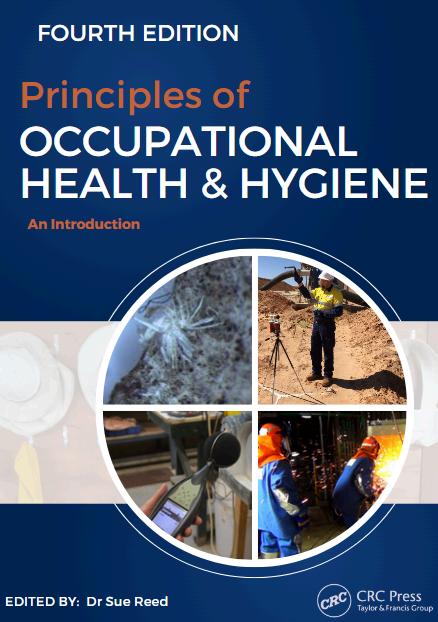

We're delighted to welcome our newest members across Full, Provisional, Associate, and Student levels, as well as those advancing in their Professional membership. It’s fantastic to see our community grow!
With a high volume of applications this year, processing is taking a little longer than usual. We appreciate your patience and extend a huge thank you to our M&Q panel and interviewers for their hard work during this busy time.
If you're thinking of applying, please be aware of the current delays but we’d still love to receive your application. AIOH is experiencing exciting growth, and we look forward to sharing more updates with you soon
A warm welcome to all our new members we’re thrilled to have you with us!
Alex Corbally-Vaselli
Joshua Martin
Andrew Pittaway Jubin Koshy
Atefeh Abdolali
Brendan Egberts
Catherine Hua Ngo Chieng
Rebecca Shanks
Ryan Wynch
Kudakwashe Promise Nechikwira Tasiano Enrico
Leigh Thredgold
Marius Meintjes
Holly Bredin-Grey Paul Shephard
Jai Braun
Rebecca Cave
Ropafadzo Richards
Shankar Ghising
Boovarahavan Arivalagan Michael Hannah
Lachlan Harris
Joshua Barrett
Ethan Sullivan
Thomas Connell
Tiffany Dozet
Kate Gibbs
Jodie Daines
Feiyang (Teddy) Chen
S S O C
Adam Barnes
Ebony Fitzgerald
Liang-Yu Chen Rica Tobillo
Adam Sadirov Emina Buljubasic Louise Dubois Rizza Ramiro
Adrian Kumar Emma Kuhn
Alexander Voinovich Garry Matthias
Ausaaf Ahmad Gavin Bean
Benjamin Hinton Haotian Luo
Bill Papps
Ingrid Potgieter
Brooke Hornsby Jake Moyle
Carla Pinder
Marie Kikukama Rommy Htoo Htoo
Marle Hooman Samantha Bainbridge
Martin Malone Sarah Coyle
Melissa Allsopp Samuel Amoo
Meryll Ashton Scott Horsnell
Michael Le Shaun Muir
James Zeylemaker Michelle Popielczyk Simon Rooney
Carla Presbury Janice Boddice
Chris Johnsson Jeffrey Moredock
Claire Watt Jema Imanova
Claudia Fine John Usher
Connie Kapernick
Danica Westacott
Daniel Fenton
Jordan Van Arend
Joshua Kartika
Joshua Spalding
Darren Winningham Kaitlyn van Tienhoven
Debbie Williamson Kel Davies
Douglas O'Neill
Kimberley Gray
Muhammad Sheikh Teisha Bristow
Narelle Dowden Thomas Beckhurst
Natalie McQueen Tim Liang
Natasha Bartle Tony Brumler
Nicholas Lynar Tracey O'Connor
Pankajbhai Patel Tsz Wai Leung
Rachael Torome Vishnu Valliyodan
Rael Murray William Baker
Ram Kumar Zulma Rueda Martinez
Raphael Touzel
Amy Dutton
Brett Enright
Eden D'Souza
Hayley Hambleton
Nsika Ngubane
Lauren Durandt Rachelle Patturajan
Markus Koskela Shamim Gulzar
Excitingnews theAIOHhasreachedamajormilestone!We’veofficiallyhit500FullMembers,whichisa fantasticachievementforourprofessionalcommunity.
Alongsidethis,we’reseeinggreatgrowthinourProvisionalmembers,furtherstrengtheningthe leadershipandexpertisewithintheInstitute.
Atthesametime,ouroverallmembershipincluding Fellow,Associate,andStudentgrades, isontrackto reacharound1,650membersbytheendofthefinancialyear.
Thisgrowthreflectsthestrengthanddiversityofourprofessionandthecontinuedcommitmentof membersateverystageoftheircareer.
Thankyoutoallourmembers,Council,andvolunteersforyourongoingcommitmentandcontributions totheAIOH.Yourpassionanddedicationarewhatmakeourcommunitystrongandhelpadvancethe professionofoccupationalhygieneacrossAustralia.Wetrulyappreciateeverythingyoudoandlook forwardtoworkingtogetherforanothersuccessfulFYahead
Aswemoveintothe2 halfof2025andcelebrate45yearsoftheAIOH,it’sagreattimetostayacross yourmembership,getinvolved,andmakethemostofwhat’sahead.Here’saroundupofimportant updates,reminders,andopportunitiesforallmembers.
MembershipRenewals–StayFinancialtoStayConnected
Aremindertorenewyourmembershipwithin90daysofyourrenewaldatetomaintainyouractive status.
Emailremindersaresent2weekspriortoyourrenewaldate,withfollow-upsevery30days. YoucancheckyourrenewalstatusanddownloadyourinvoiceatanytimeviatheMYAIOHportal.
Ifyouneedhelp,refertoourRenewalUserGuideorcontacttheAIOHOffice
Remainingfinancialensuresyoucontinuereceiving:
Fullaccesstomember-onlyresources
Apply&SubmittingfortheAIOHProfessionalDevelopmentAwards
Votingrightsandeligibilitytoserveoncommittees
Discountsforconferences,events,andmerchandise
Recognitionofyourpost-nominalsandprofessionalstatus
Unfortunately,failuretorenewwithinthe90-daywindowwillresultinyourmembershipbeingmarkedas lapsed.
AllofficialAIOHcommunicationcomesviaemail.Thatincludeseventinvites,renewalreminders,EOIs, committeecalls,andupdatesfromCouncil.
Tomakesureyou’regettingthem:
Checkyourjunk/spamfolderregularly
MakesureyouremailaddressiscorrectintheMYAIOHportal
Add@aioh.org.autoyoursafesenderlist
Missinganemailcouldmeanmissingdeadlines,opportunities,orimportantmemberupdates;aquick checkcouldsaveyoutimelater.AllemailsviaourmainplatformarealsoavailableviatheMYAIOHemail library.
We’re also reminding members to stay sharp when it comes to scam emails, especially around EOFY Phishing scams are getting more sophisticated.
Please note:
AIOH will never ask you to purchase anything (e.g. gift cards or make purchases) on our behalf. We will only request payments for membership, official events, and merchandise through trusted, secure channels
Always double-check the sender’s email; all AIOH communication will come from a verified @aioh.org.au address. If you receive something suspicious, don’t click any links. Instead, forward the message to admin@aioh.org.au so we can investigate and warn others if needed.
of AIOH Logo & Post-Nominals – Keep It Professional
AIOH members are encouraged to review our Logo & Post-Nominals Policy. This policy outlines the correct use of: AIOH logos (for both individuals and companies) Member post-nominals such as MAIOH, FAIOH, and COH
Using these appropriately protects your professional standing and supports consistency and integrity across the profession.
Your member profile is more than just a contact listing it’s how we connect you with opportunities, tailor events, and represent our member base. In the coming weeks, we’ll be rolling out a significant update to your MYAIOH profile experience, so now’s the perfect time to review your details Log in and check:
Your contact details and organisation Industry sectors you work in Areas of occupational hygiene experience Upload a photo if you wish it helps others connect with you! This helps us build a more informed, engaged, and connected AIOH community.
We have exhausted all available spots for the 2025 COH Exam cycle, with all exam placements allocated
We’re still accepting ‘Expressions of Interest (EOI)”; however, any EOIs received from this point forward will be added to the 2026 waitlist. States and dates for 2026 will be confirmed later this year, and priority will be given to those already on the waitlist.
Get ready for a busy second half of the year, with some great opportunities to get involved and recognised. Now’s the time to start prepping for your submissions and nominations
1 September – AIOH Awards Submissions Open 18 September – Fellow Nominations Open

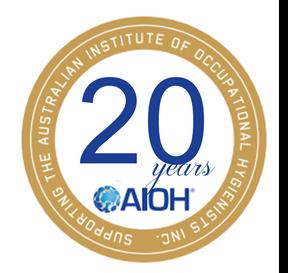
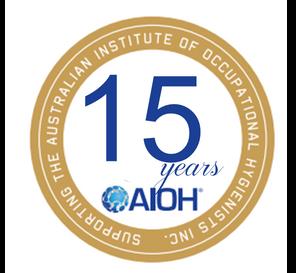
Trini Trembath
Shelley Hilton
Philippa Gibson
Kerrie Burton
Andrew Orfanos
Samantha Clarke
Mahinda Seneviratne
David Torr
David Bembrick
Sarah Johnston
Helen Phillips
John Yates
Jason Green
Rob Alcock
Paul Richardson
Kristie Davies
Louise Burt
Holly Fletcher
Andy McCarthy
Carl Strautins
Jodi Dawson
Adrian Paine
Sharyn Gaskin
Edward Bartosh
Richard Crafter
Peter Adlington Con Spicer
Neil Kumar
Carolyn Topping
Henriette Rossouw
Sean Walden
Nicola Peel
Michael Davey
Maria Jose van Leeuwen
Jodie Britton
Dyann Christie-Down
Brian Murphy
Bradley Gundlach
Craig Tonks
Elizabeth Uru
Dianne Allen
Tracey Bence
Kate Warton
Katarina Neves
Cheryl Nott
Shane Fergusson
Mark Lewis
Reagan Neal
Keith Mottram
Barry Byrne
Jasmine Paterson
Anne Hutcheson
Shaun Carrigan

The PD&E Committee is responsible for the development, organization, and delivery of a range of quality educational and professional development activities for members and broader community. The Committee meets every month, and in April introduced a Co-Chair arrangement with Dr Jane Whitelaw and Dr Sharann Johnson.
Members – Dr Jane Whitelaw, Dr Sharann Johnson AM, Luke Dunk, Assoc. Prof Kelly Johnstone, Rob Alcock, Dr Sue Reed AM, Dr Adelle Liebenberg, Dr Kennedy Osakwe, Melanie Cox, Linda Apthorpe, Dr Jen Hines, Claire Phypers, Kelly Phypers and Alicia Gorman.
BPC Courses – 8 Courses have been scheduled this year in Brisbane, Sydney, Melbourne and Perth. A big thank you to our Facilitators Linda Apthorpe, Dr Jen Hines and Mel Cox as well as our Trainers Dr Kerrie Burton, Dean Gleeson, Dr Jane Whitelaw, Daniel Cronje and Dr Julia Norris.
Webinar and Masterclass Program – The 2025 Program was designed to cover a spectrum of topics presented by leading external presenters as well as AIOH members. Two Masterclasses will be offered this year on AIOH Certification Training and Psychosocial Risk.
February - AIOH Foundation Research: Measuring Exposures to Cleaning Chemicals Containing Quaternary Ammonium Compounds
March - AIOH24 3M Best Conference Paper – Andrew Orfanos on Lead Risk Assessments
April – Update on Dust Suppression in Construction Industry
May – PFAS Remediation in a Modern Fire Service
June – Update on Diesel Emissions
Missed a session - Recordings found here
July – Vehicle Cabin Air Quality Standards & Controls, AS23875.
July Masterclass - Psychosocial Risk
August – Update on ISO Respiratory Protection
September Masterclass - AIOH Certification training
October – Occupational Epidemiology and Job Exposure Matrices
November – Asbestos Awareness Week – Presenters are invited from ASSEA, AHCA, AIOH, AWU, FAMANZ, Safe Work Australia to present on current issues.
AIOH Events listing here
Ethics Training – The PD&E Committee have been working with the Ethics Committee to identify potential training courses for members and in particular COH members.
Silica Awareness Training – Recommendation made to endorse other training companies courses rather than the AIOH develop a course as currently there is so much available meeting the regulatory guidelines.
AIOH Report Writing Guideline - Update was completed and team led by Assoc. Prof Kelly Johnstone. Now available on the AIOH website,
AIOH Digital Library – Work in progress to improve access to topics in the collection of webinar videos and other videos.
Accreditation and Re-Accreditation of University Courses, Policy and Procedure – Changes were made to the assessment criteria for off campus courses and laboratories.
Finally, a big thank you to Claire, Kelly and Alicia for their support and who are behind the scenes make the BPC courses and webinars run so smoothly and professionally for our members and guests.
Over the past six months, our State Liaisons have been busy hosting a range of Chapter events across the country A big thank you to our SLOs for their efforts, and to everyone who’s attended and supported these sessions Stay tuned there’s more to come!



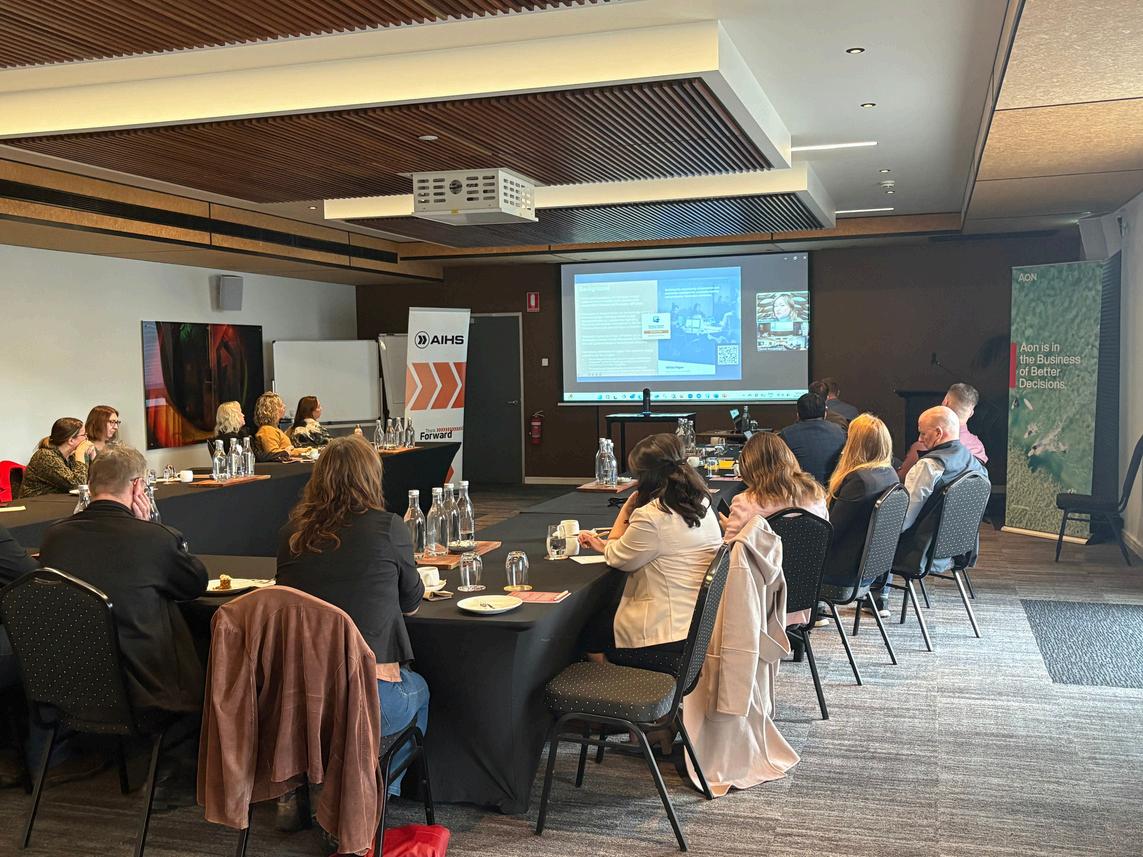

Whatisyourroleinthecommittee,andhowdidyougethere?
IIhavebeenthePD&ECommitteeChairforthepast3yearsandcommittedtothe professionaldevelopmentofourmembers.DuringtheCOVIDperiod,IwastheAIOH SecretaryandthentheAIOHBusinessManager.Theacceptanceofvirtualmeetingsgavethe opportunitytodevelopengagingwebinarprogramswithspeakersbothfromoverseasand withinAustralia Webinarshavebeenagamechangertowaywelearn
Why are you passionate about OH, and what keeps you dedicated?
Being an occupational hygienist has been a privilege to have a job where I can make a difference to protect worker’s health Working with both senior managers and workers has been challenging, both technically and having the right influencing skills to make a difference It has often been long hours however it has been a lot of fun working closely with amazing people to improve the health and safety in their workplace. Being an occupational hygienist opened the door to a career working throughout Australia and internationally. Working at the biggest mine sites in the world as well as working in all aspects of the petroleum industry. From refinery workers, to aviation refuellers, to asphalt workers, to oil traders making multi-million dollar deals, there was always a health issue
Occupational hygiene has given me an opportunity to meet many inspiring people as well as making lasting friendships throughout my career. Hence I continue to support young people and the profession through my volunteer activities, especially OHTA, https://ohtatraining.org/. Istheresomethingyouwouldlikepeopletoknowaboutyouand/orOccupationalHygiene/AIOH
In my travels, I have created a collection of Georgian and Victorian door finger plates of international standing. My next goal is to establish a website to showcase the fabulous workmanship of these unknown artisans Along with the fabulous beauty of the door plates, I hope to tell their stories about working conditions and health risks.

Whatisyourroleinthecommittee,andhowdidyougethere?
IrepresentECUonthePDECommitteeandcurrentlyserveastheCourseCoordinatorfor thepostgraduateOccupationalHygieneprograms Myinvolvementreflectsbothmy professionalbackgroundandECU’sstrongcommitmenttoadvancingbestpracticeinthe profession
Why are you passionate about OH, and what keeps you dedicated?
I’ve always been driven by a deep commitment to protecting worker health. Istheresomethingyouwouldlikepeopletoknowaboutyouand/orOccupationalHygiene/AIOH There’s nothing more meaningful than knowing your work helps someone make it home whole and healthy What keeps me going is the opportunity to create a lasting impact through education, leadership, and advocacy, and to influence the next generation of professionals who will carry that mission forward.
The effect of an Occupational Hygienist is a bit like the invisible hazards we work to control, only ours is a positive kind of invisible It is measured by the illnesses that never happen and the lost-time injuries that never occur, and although we may never fully quantify the extent of what we prevent, we know our work makes a real difference. And yes, we all get a little too excited about new equipment, spreadsheets, and good data. It’s all part of the magic!

Whatisyourroleinthecommittee,andhowdidyougethere?
MycurrentroleisasamemberoftheProfessionalDevelopment&EducationCommittee
ACOHexaminationpanelmember
RESPFITAccreditedFitTesterexaminer.
IamtheEditoroftheAIOHBook“OccupationalHealthandHygiene:AnIntroduction”for thelast3editions
IhavebeenonAIOHcouncilandamapastAIOHPresident.
Why are you passionate about OH, and what keeps you dedicated?
I am passionate about improving workers health outcomes so that workplaces as safe and health places to be Improved worker health improves lives for all
Istheresomethingyouwouldlikepeopletoknowaboutyouand/orOccupationalHygiene/AIOH
Occupational Hygiene is a professional focussed on improving the health of all It is a great career if you like working with people and are happy to have a work life that is constantly changing You also need to have a passion for continue to learn and grow in your know of occupational health.

What is your role in the committee, and how did you get here?
I have represented the University of Wollongong on PD&E for the last 16 years.
WhyareyoupassionateaboutOH,andwhatkeepsyoudedicated?
After working in industry for over 25 years, seeing countless cases of illness that should never have occurred and striving to improve occupational health outcomes, I realised I was doing the same things, just in different places
Joining UOW enables me to have a much greater impact and to touch the future by equipping today’s occupational hygienists.
Istheresomethingyouwouldlikepeopletoknowaboutyouand/orOccupationalHygiene/AIOH PD&Ehaveworkedhardtodeliverarangeofeducationalresourcesandprogramstobuildthecapacityof AIOHmembersandthatofAlliedprofessionals.Pleaseconsiderhowyoumightcontributetothisimportant work.
ToquoteNelsonMandela“Educationisthemostpowerfulweaponwhichyoucanusetochangetheworld”

What is your role in the committee, and how did you get here?
II have been a member of the Professional Development and Education Committee for the last 3 years Joining was easy, I responded to the advert in The Filter and had a short conversation with current Committee Chair Dr Sharann Johnson WhyareyoupassionateaboutOH,andwhatkeepsyoudedicated?
Working across many organisations, there is always a strong focus on prevention of acute, physical injuries. The support and resourcing for prevention of chronic and latent occupational illness has traditionally been limited as the outcomes are not immediately visible. My passion is supporting better health outcomes for the workforce
Istheresomethingyouwouldlikepeopletoknowaboutyouand/orOccupationalHygiene/AIOH
TheworkweasOccupationalHygienistdoisrewardingandweneedtobebrandambassadorstothewider WHScommunitytobuildunderstandingofhowwesupporttheworkforceandwhentoengagewithus.

What is your role in the committee, and how did you get here?
I am an active member of the PD&E Committee, contributing to several key projects such as reviewing chapters for the Principles of Occupational Health and Hygiene and the AIOH Report Writing Guidelines among others. I joined the committee as a representative and Program Manager of the Master of Occupational Health and Safety (Occupational Hygiene Stream) program at RMIT University, Melbourne
WhyareyoupassionateaboutOH,andwhatkeepsyoudedicated?
With over 25 years of experience in high-risk industries, I’ve witnessed firsthand the painful effects of occupational hazards on workers. These frontline encounters have shaped a deep sense of empathy and a strong desire to make a difference My passion for occupational hygiene is driven by the urgent need to protect workers, and what motivates me daily is the awareness of the serious consequences that can result from inaction in reducing workplace exposures.
Istheresomethingyouwouldlikepeopletoknowaboutyouand/orOccupationalHygiene/AIOH IamanAssociateProfessorofOccupationalHygiene,andtheProgramManagerfortheMasterof OccupationalHealthandSafetyatRMITUniversity,withafocusonOccupationalHygiene Asaleaderinthe field,Ibringbroad-basedfrontlineexpertiseindevelopingpractical,evidence-basedsolutions.I’malsodeeply committedtomentoringthenextgenerationofprofessionals,supportingtheirgrowththroughguidance, collaboration,andastrongpassionforprotectingworkerhealth.

What is your role in the committee, and how did you get here?
I am an industry representative member of the PD&E committee who is passionate about continual growth and learning in our industry I became a committee member to support the Institute and help our members who are facing new and dynamic workplace challenges.
WhyareyoupassionateaboutOH,andwhatkeepsyoudedicated?
Fundamentally I believe no person should suffer any ill health effects as a result of simply going to work and I will continue advocating for worker health wherever I can.
Istheresomethingyouwouldlikepeopletoknowaboutyouand/orOccupationalHygiene/AIOH Asprimarilyavolunteerrunorganisation,theAIOHiswhatwemakeofit.Iencourageallmemberstoget involvedandhelpshapenotonlytheInstitute,buttodriveimprovedworkplaceconditionsthroughout Australia.

What is your role in the committee, and how did you get here?
II’m part of the PD&E Committee, where I help shape the professional development and education programs we offer at the AIOH. I ended up here thanks to a mix of saying “yes” to opportunities, a genuine love of learning, and a strong belief in giving back to the profession. I’ve always been passionate about helping others grow and develop, so this committee felt like a natural fit
WhyareyoupassionateaboutOH,andwhatkeepsyoudedicated?
Occupational hygiene brings together everything I love: science, problem-solving, and most importantly, people I’m especially passionate about education and research, and I find it incredibly fulfilling to support students as they grow into confident, capable professionals. Watching them develop their skills, challenge ideas, and go on to have rewarding careers in OH is one of the best parts of what I do. That, and knowing that our work really can make workplaces healthier, happier places.
Istheresomethingyouwouldlikepeopletoknowaboutyouand/orOccupationalHygiene/AIOH I’dlovefuturepotentialstudentstoknowjusthowrewardingandinterestingacareerinoccupationalhygiene canbe It’snotjustaboutmanaginghazards,it’saboutprotectingpeople,influencingchange,andconstantly learningalongtheway.Asforme,I’msomeonewhofindsgreatjoyinmentoring,teaching,andbeingpartofa communitythatgenuinelycares.I’mpassionateaboutgrowingourprofessionandhavingitrecognisedmore broadlyforthegoodworkthatwealldo.

What is your role in the committee, and how did you get here?
I’m one of three facilitators for the Basic Principles of Occupational Hygiene (BPC) course. I’ve been involved in delivering these courses for many years my first one was way back in 2008! In 2021, I was fortunate to step into a more permanent role alongside the fabulous Linda Apthorpe, and more recently, Melanie Cox joined us last year
I love being part of the Basic Principles of Occupational Hygiene (BPC) course. We get such a wide variety of people coming through, from those who’ve only just heard the term “occupational hygiene,” to others who have been working in the field for some time, often in a specific area like hazmat, and now want to broaden their understanding. We also see doctors preparing for occupational physician exams who need a solid foundation in the principles The energy in the room is always high, even though the course is intense, it’s five days of content that can feel like drinking from a fire hose! But it often whets their appetite, and it’s incredibly rewarding to see so many go on to further study in the field.
More broadly, occupational hygiene has such a tangible impact,it’s about protecting people’s health at work and preventing harm before it happens That proactive, evidence-based approach really resonates with me We’re helping to create healthier workplaces, prevent illness and injury, and educate people,many of whom are genuinely interested in how they can make a difference. That sense of purpose, and knowing our work can improve someone’s long-term health and wellbeing, is what keeps me inspired and dedicated.
Istheresomethingyouwouldlikepeopletoknowaboutyouand/orOccupationalHygiene/AIOH There’sprobablyalotIcouldsayaboutoccupationalhygieneandtheAIOH,butmybiggest recommendationissimple:getinvolved.ActivelyparticipatingintheAIOH,whetherthat’sbyjoininga committee,presentingataconference,applyingforawards,orjustshowingupandconnectingwithothers, canbeincrediblyrewarding.It’safantasticinstitutebuiltonthededicationofmanypassionatevolunteers. Bytakingthetimetoengage,you’llnotonlygainknowledgeandexperience,butyou’llalsobuild connectionswithcolleagueswhosoonbecomefriends.TheAIOHcanofferarealsenseofcommunity....if youchoosetobepartofit

What is your role in the committee, and how did you get here?
I’m one of the AIOH Basic Principles of Occupational Hygiene Course facilitators I’ve been teaching this AIOH course for over 15 years The course sits under the remit of PD&E
WhyareyoupassionateaboutOH,andwhatkeepsyoudedicated?
I love sharing my passion for occupational hygiene and how to protect worker health during teaching and training opportunities, including facilitating the AIOH BPC
Learning is a lifelong adventure, and I’m honoured to be a BPC facilitator and to have the chance to grow and learn more by teaching the course, meeting new people and learning from our wonderful students in diverse workplaces who want to know more about occupational hygiene!
Istheresomethingyouwouldlikepeopletoknowaboutyouand/orOccupationalHygiene/AIOH Occupationalhygieneisapracticaldiscipline,andtome,itisalsoagreatplatformforlearningabouthow thingsaremined,farmed,manufactured,andconstructedinourmodernworld Whenwedoourwork,itis essentialweapplytheoryandknowledgeethicallytotheworkplacecontext.
AIOHisveryimportantinsupportingoccupationalhygienistsviaeducation,networkingandresources.It’s strengthistheincrediblevolunteerswiththeknowledge,dedicationandcommitmenttocontinually contributetohelpothersandprotectworkerhealth
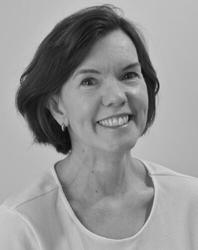
What is your role in the committee, and how did you get here?
My role in the PD&E Committee is as one of the three AIOH BPC Facilitators.
WhyareyoupassionateaboutOH,andwhatkeepsyoudedicated?
The basic premise that everyone deserves to come home to their families without illness or injury is the reason I remain passionate about occupational hygiene. Seeing my own children join the workforce has added another dimension to the ‘why’ and ‘how’ we do this with a different generation of workers!
Istheresomethingyouwouldlikepeopletoknowaboutyouand/orOccupationalHygiene/AIOH Evenwiththebusiestoflives,itiseasytoremainfocussedwhencontinuallyseeingthededicationofother hygienistsworkinghardeverydayintheirjobsandasvolunteers-bothinAustraliaandaroundtheworld.
AsaBPCFacilitator,itisaprivilegetointroduceoccupationalhygienetopeoplefromavarietyof backgroundsandthenseeingthemrecogniseandappreciatetheimportanceofthisbranchofsciencein theworkplace.It’salsosucharewardwhenattendeesthenchoosetopursueoccupationalhygienistasa profession!

We kicked off our first NSW SLOW meeting in 2025 with a ‘lunch and learn. Paul R Pickering (Aeroqual) and James Thompson (EP Risk) provided insightful case studies on managing contaminants at legacy industrial sites and how real time monitoring was a valuable tool in monitoring controls and quick decision making. A big thank you to for our guest speakers sharing their expertise on a wide variety of contaminants such as arsenic, lead, PAHs, VOCs, diesel particulate, crystalline silica, and noxious gases including CO, NO₂, and H₂S.
The session highlighted the importance of utilising multiple monitoring strategies— whether personal, static, or handheld—to assist with compliance requirements and site-specific risks. A key message was the value of real-time data to support fast, informed decision-making in dynamic work environments.
Special thanks to Richard Wilkinson (Tetra Tech) for hosting and Jason Foster (ETS) for sponsoring the speakers.
Dr Carmen Naylor - NSW State Liasion
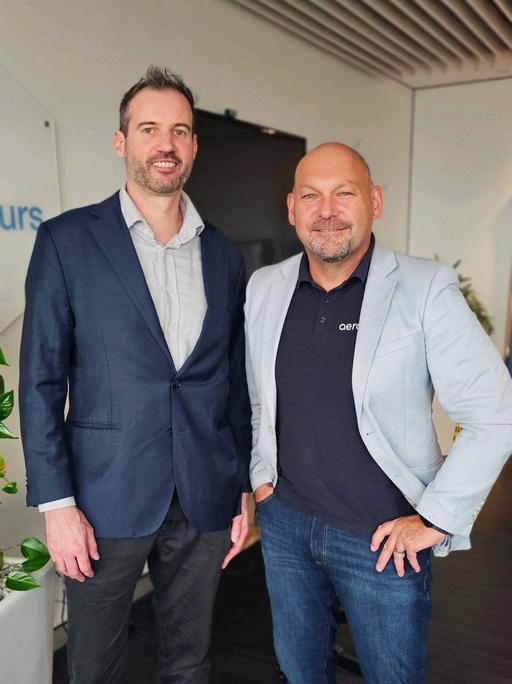
AIOH Chapter Meetings: A Call for Presenters and Industry Insights
We thank our state liaisons for their work in hosting the AIOH Chapter Meetings across Australia. These meetings provide an opportunity for members and industry professionals to connect, share, and discuss occupational hygiene.
Each Chapter Meeting includes discussions on industry challenges, regulatory updates, and new solutions. With guest speakers, interactive sessions, and case studies, these meetings encourage participation in shaping our profession.
We want to hear from you our members and industry regulators who have stories, insights, and expertise to share. Whether it’s a case study, a regulatory update, or a perspective on occupational hygiene practices, your contributions help drive meaningful discussions.
If you have a presentation idea or an experience to share, we encourage you to get involved. These meetings rely on collaboration, and your insights can provide valuable takeaways for others.
Thank you to our state liaisons for providing a space where professionals can exchange knowledge and build connections. We look forward to hearing from more members and seeing new contributions to our Chapter Meetings.
Interested in presenting or sharing your story? Get in touch with us today; membership@aioh.org.au!
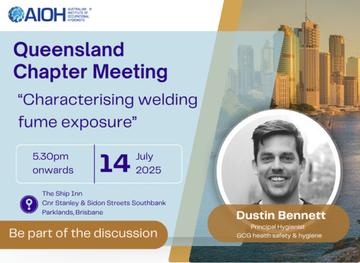



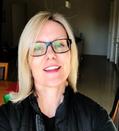


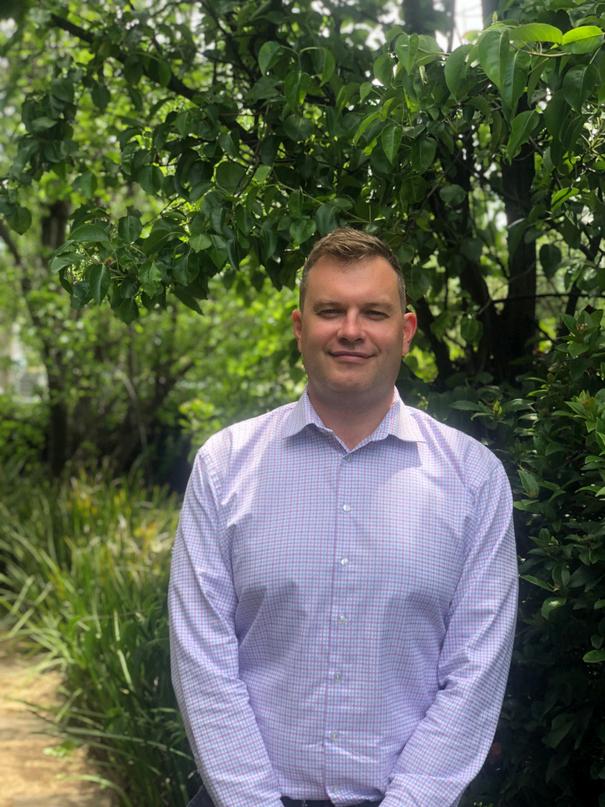





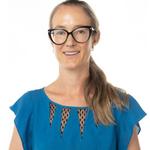
The Australian Institute of Occupational Hygienists (AIOH) is conducting an important survey to evaluate workplace health performance. We’re seeking insights to help define good health practices, identify gaps in occupational health management, and establish a framework to improve worker health outcomes.
What will the survey achieve?
Define what constitutes good health in the workplace
Identify gaps in occupational health management
Establish a baseline for continuous improvement
Provide a framework for safeguarding worker health
Participation in the survey is voluntary and anonymous.
We expect that the survey will take 15 minutes to complete. Your input will help shape the future of worker health.
Click here to complete the survey.






We’re thrilled to announce that registrations for AIOH25 have officially opened!
In 2025, we are embracing the theme of 'Evolution, Insights, Into Impacts' a concept at the heart of our profession as occupational hygienists, in the beautiful city of Sydney, New South Wales
Since AIOH21, our themes - Challenge for Change, Simple Sustainable Solutions, Future Ready, and Scientific Storytelling - have all pointed to one word: Evolution AIOH25 explores the ongoing evolution of occupational hygiene and the challenges shaping our industry
Post 2020, changes have placed occupational hygienists in greater demand than ever Driven by legislative updates, technological advances, rising workplace expectations, and a world-class commitment to progress, it's an exciting time for our profession. But key questions remain: Have we done enough? Are we truly future-ready? Are we guiding the next generation? What insights can we provide to make meaningful impacts?
AIOH25 will explore:
The next generation of occupational hygienists - how we promote, train, and inspire
Insights, the changes in legislation and what impact it is having
New sampling methodologies and cutting-edge technologies
How we continue to anticipate, recognise, evaluate, and control
And most importantly: Are we there yet, or is there still more to do?
Event details:
Conference dates

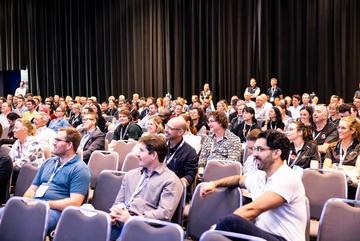

Monday 1st December - Wednesday 3rd December
Continuing Education Sessions
Saturday 29th November - Sunday 30th November
Venue
International Convention Centre (ICC), Sydney


Early bird pricing ends on Friday 19th September


Interested in showcasing your brand at our upcoming conference?
Download the sponsorship prospectus from our website to explore the range of packages available and secure your exhibition booth today



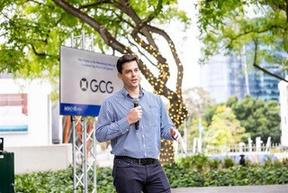
For further enquiries, please email the Senior Events Manager Kelly Phypers, or call the AIOH office on (03) 9338 1635
AIOH sincerely thanks the conference committee for their invaluable support and assistance.
Conference Chair
Kerry McDougall, Principal Occupational Hygienist, Occupational Hygiene Consulting Pty Ltd
Scientific Program Chair
Mark Rawlings, Inspector, SafeWork NSW
Jodi Dawson, Senior Manager Global Health, Orica
Laurent Fenouil, Business Engineer, ITGA Group
Ryan Forsyth, Senior Occupational Hygienist, Department of Defence
Jimmy Hu, Senior Analytical Chemist, SafeWork NSW
Andrew Orfanos, Division Director, VA Sciences
Milankumar Patel, Principal Consultant, RED OHMS Group
Hamish Rae, Senior Occupational Hygienist, GCG
Susan Simmonds, National Laboratory Manager, Prensa Pty Ltd
Jane Whitelaw, Head of Discipline/Academic Program Director: OHS, University of Wollongong


As a Student Member, your involvement in AIOH25 is invaluable. This is your opportunity to gain key insights into the ongoing evolution of the occupational hygiene field and to contribute to shaping the future of our industry.
AIOH has a strong commitment to fostering the next generation of occupational hygienists, and AIOH25 will proudly continue this tradition
We are offering full and part-time student members with less than 3 years industry the experience the opportunity to attend conference free of charge !
This is an incredible chance to:
Learn from leading experts Network with industry professionals Explore the latest research, technologies, and emerging trends driving the future of occupational hygiene
Don’t miss this unique opportunity to kickstart your professional journey at AIOH25!
Please note that your registration does not include tickets to the social events; these can be purchased separately.



Register early and you’ll go in the draw to win one of two exciting prizes:
Jet boat ride for two
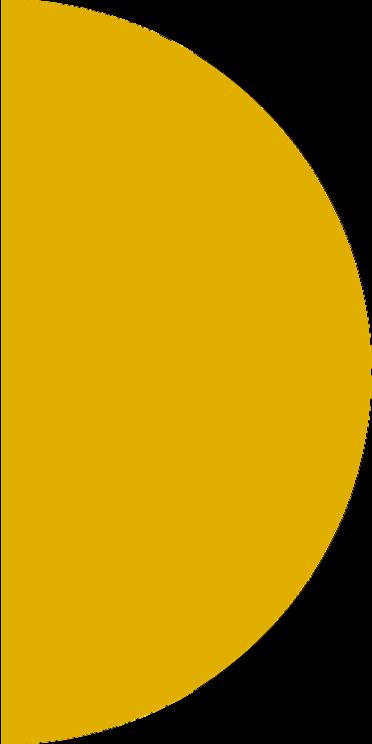
Two lucky winners (plus a guest each) will enjoy an exhilarating jet boat ride on Sydney Harbour the perfect way to kick off your AIOH25 experience!
Eligibility: All Early Bird registrants who purchase a full conference registration are eligible. This includes complimentary full or part-time student registrations with less than 3 years of industry experience
Two complimentary half-day Continuing Education Sessions
Boost your learning at AIOH25 with two Continuing Education Sessions of your choice!
Eligibility: All Early Bird registrants who purchase a full conference registration Student and Retired registrations are not eligible for this prize
Take advantage of early bird registration and enjoy up to 25% off standard member rates.
Early bird pricing ends on Friday 19th September

Register here

Following the success of last year’s members’ debate, we are excited to announce preparations for this year’s debate are underway!

We are now seeking Expressions of Interest from those who would like to be involved as Team Captains or Debate Participants The debate aims to showcase diverse perspectives on key issues that shape our profession and provide an engaging, thought-provoking session at the upcoming conference
This year’s format will again feature two teams, each consisting of three members, including a Team Captain, debating on a topical occupational hygiene theme The session will be facilitated by a neutral moderator, and audience voting will determine the winning team.



We are currently considering a range of debate topics that reflect both emerging and ongoing challenges in occupational hygiene, including:
The potential of AI and automation to enhance or hinder hygiene practice
The need to shift focus from exposure control to health outcomes
Whether universal exposure standards are appropriate across industries
The practical limitations faced by SMEs in adopting best-practice controls
And whether it’s time to rethink the traditional hierarchy of control
These are just some of the possible topics under consideration the final debate theme will be selected based on relevance, balance of perspectives, and participant interest
If you’re interested in taking part whether to lead, debate, or contribute, please let us know by submitting your EOI.
We look forward to another dynamic and engaging session at AIOH25!

Looking for accommodation in Sydney?


Presidents cup virtual golf
Get ready for an exhilarating virtual golf tournament filled with fun and friendly competition! Challenge your skills and play against your colleagues and peers!
Date: Sunday 30th November
Time: 12:00 pm to 3:00 pm
Venue: Golf Space
Pick up location: ICC Sydney
Tickets can be purchased upon registration
Sponsored by:



We have secured discounted rates for the following hotels available via the links provided below:
Sofitel Sydney Darling Harbour
5 star hotel
W Sydney
5 star hotel
Novotel Sydney Darling Harbour
4 star hotel
Adina Apartment Hotel Darling Harbour
4 star hotel



For more information and updates, visit our website and follow AIOH on LinkedIn, Facebook and Instagram
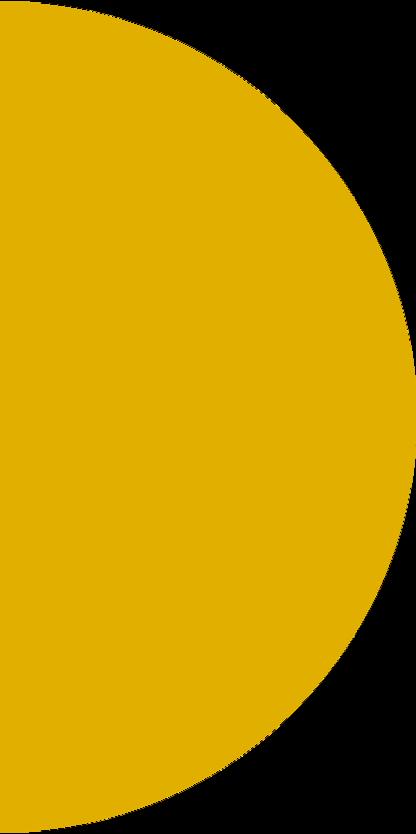


Experience Sydney like never before with the BridgeClimbSydney. From dawn to dusk enjoy unforgettable views of the Sydney skyline on the iconic Sydney Harbour Bridge.
As a conference delegate you will receive 20% off selected climbs. Your special conference rate will appear at checkout after clicking ‘Book Now’.
Offer details:
Valid for climbs between 24 November – 10 December 2025
Book by 10 December 2025
Delegates must show conference registration or lanyard at check-in (full price applies if not provided)
Friends & family may access the discount when accompanied by a delegate
Special conference offer applies to climbs over $350; no discount for climbs $350 or under
For more information visit BridgeClimb Preparation Guide
All AIOH25 attendees can enjoy 30% off the iconic Red Shark Thrill Ride with Oz Jet Boating. Feel the speed, the spray, and the Sydney Harbour like never before.
Use promo code OJAIOH25 at checkout and get ready for an exhilarating ride across the iconic Sydney Harbour






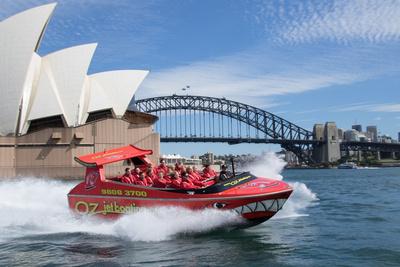


aioh.org.au/conference




The Basic Principles of Occupational Hygiene course provides an introduction to occupational hygiene and is an ideal first step for professionals looking to further their knowledge in this area.
Learn how to recognise occupational hygiene hazards, and learn skills to be able to select the appropriate equipment to measure specific occupational hygiene hazards; devise a suitable sampling strategy; present results in a useful format; and recommend suitable control strategies. Upcoming Courses



14th - 18th July
Courtyard by Marriott

Current 2025 Graduates!

18th - 22nd August
Adina Apartment Hotel Darling Harbour

8th - 12th Sept
Courtyard by Marriott


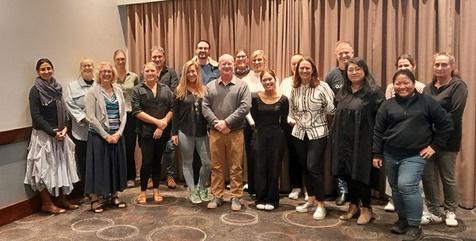


6th - 10th Oct Novotel Perth Langley

Visit our events webpage for all upcoming events and courses!

As 2025 gathers momentum, the first three BPC courses have been presented in Melbourne (March), Sydney (April-May) and Perth (May), with all participants successfully completing the OHTA201 certification. Congratulations to all who attended!
Do you know that the AIOH BPC has a long history?
First held in 1985, the original concept was a two-day crash course conceived and written by Brian Davies and Doug Rhodes - and presented to a class of two students! From there, the course grew to a 4-day course with practicals and an exam Around 2012 the AIOH became accredited with the OHTA (International Occupational Hygiene Training Association), and now the current BPC course merges the original practical AIOH content with the OHTA201 course to provide that ‘AIOH extra’!
To celebrate the 40 years that the AIOH has been providing practical training for OHs, we will be bringing you some words from some of our alumni - both recent and from across the decades. They’ll be sharing some of their thoughts and memories of the AIOH BPC and how it ignited that special spark to begin a career in occupational hygiene and set them on their pathway to their current careers.
Alumni Interview
Mark Reggers (COH, MAIOH) who attended the BPC in Sydney 2010/2011
What is your current Job Title?
Occupational Hygienist/Specialist Application Engineer
Why did you sign up for the BPC?


At the time I was working in a PPE & safety technical sales role, so I attended this course to improve my knowledge to better assist support my customers Also to know when to refer a customer to an Occupational Hygienist
Did the BPC influence your decision to enter or remain in the OH field?
Absolutely. I really enjoyed the course and found it so interesting. This is what then lead to me enrolling into the Occupational Hygiene Graduate Certificate Program at Uni of Wollongong. It was then at UOW I decided to pursue a career in Occupational Hygiene, so without the BPC and exposure to Occ Hygiene I would not be in the profession I am today!
Would you recommend the course to future Occupational Hygienists?
No doubt about it We all don’t know what we don’t know The BPC does an amazing job of exposing attendees to an inkling of the breadth of OH and there are so many areas that people can focus on, thinking of work/career engagement/satisfaction. This is on top of the genuine drive and passion to protect workers' health which is a worthy endeavour itself. Then you have the most amazing network and connections of Occupational Hygienists Plus, the conference The fun never ends in Occupational Hygiene ��
Thank you Mark for telling us your story!
We would love to hear your story, too! If you have completed the AIOH BPC and would like to share your experience or memories, please contact Claire Phypers at office@aioh.org.au


Friday 11th July 2025 12:00pm - 1:00pm AEST
Register now

With lung disease still occurring, fitting new and retrofitting existing cabins to provide a safe working environment is necessary. This session will discuss and illustrate how ISO/AS/NZS 23875: – Air quality control systems for operator enclosures – Performance requirements and test methods, can be fitted into new and existing fleets, easily & affordably.
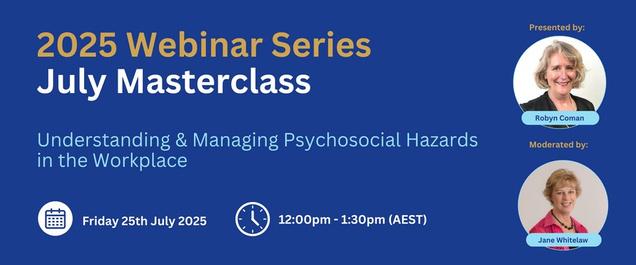
Friday 25th July 2025 12:00pm - 1:30pm AEST
Register now

Are workplace stressors impacting productivity, morale, and mental well-being? Learn how to identify, assess, and control psychosocial hazards with expert-backed strategies tailored for Australian workplaces! Join us for an engaging master class where we will explore the complexities of psychosocial hazards — from excessive job demands to workplace bullying – and provide practical tools for effective risk evaluation and management.

Friday 29th August 2025 12:00pm - 1:00pm AEST
Register now

With AuTshurtsdary 2a3rdl Oictaobe’r s202 5(& New Zealand’s) transition to the ISO Respiratory Protection Standa consideration of workplace respirator selection is the assessment of work rates. Dr Jane will cover the ISO standards Work Rate selection and guidance information. She will also discuss her PHd research on the physiological impacts of wearing respiratory protection and how this supports the approach of the new AS/NZS ISO Standards work rate approach. A brief update on the AS/NZS ISO standards transition will also be provided.
Thursday 23rd October 2025
Save the date! Registrations will open in September

Save the dates

Friday 26th September 12:00pm - 1:30pm AEST

Friday 31st October 12:00pm - 1:00pm AEDT
Please note: webinar dates and times are subject to change.

Thursday 27th November Time TBC
Webinar recordings have a new home on the AIOH website!

You can now find 2024 and 2025 webinar recordings under ‘Education’ on the AIOH website.

Webinar recordings




Isabel Kotzee - Dual Masters of Occupational Hygiene / Occupational Health and Safety at The University of Queensland
Comparative Analysis of DPM Sampling Techniques:
Measuring Respirable Elemental Carbon vs Submicron Elemental Carbon in an Underground Coal Mine
Isabel Kotzee is new to the world of Occupational Hygiene – after finishing school, she thought she
wanted to do medicine as she loved biology, science and wanted to make a tangible difference in people’s lives. Thus, she pursued the Biomedical Science pathway at The University of Queensland in 2020 After completing obtaining her bachelor’s she realised that medicine was not the right fit and discovered occupational hygiene! She enrolled in a dual Masters of Occupational Hygiene / Occupational Health and Safety at The University of Queensland.
With GCG’s support Isabel conducted her research project on a Comparative Analysis of DPM Sampling Techniques in an underground coal mine in Central Queensland
Isabel is a student member of the AIOH with the intention of applying for Associate soon.
The current recommended workplace exposure standard (WES) in Queensland for DPM is 0.1mg/m3, based on the submicron size fraction (<1 μm). However, at the time Safe Work Australia had proposed a new WES for DPM measured in terms of REC (5μg REC/m3). Several questions were posed with regards to surrogate measurement techniques for DPM; would using a GS-3 Respirable Dust Cyclone with respirable elemental carbon (REC) analysis lead to higher concentrations of REC as a replacement for measuring DPM concentrations? Does using a DPM Plastic Cyclone with submicron elemental carbon (SEC) analysis, impact the amount of interference from coal mine dust on the inferred concentration of DPM? What potential insights could these findings provide for the Queensland Mining Inspector (QMI) with regards to the proposed new REC WES for DPM?

In response, area sampling was conducted in an underground coal mine located in the Central Queensland Bowen Basin region of Australia. Sampling consisted of utilising a GS-3 Respirable Dust Cyclone with REC analysis and sampling using a DPM Plastic Cyclone with SEC analysis, as a surrogate for measuring DPM concentrations Sampling was undertaken on two development panels (Panel 601 and 602).
Three different locations were sampled at each panel. Overall, the results demonstrated that SEC concentrations were consistently lower than REC concentrations, irrespective of the location. Potential interference from coal dust and other carbonates was identified, as the presence of coal dust can artificially elevate the carbon measurement that is attributed to DPM.
Therefore, the proposed change in REC WES for DPM would present significant limitations in measuring and regulating DPM in underground coal mines, where interferences can occur. This suggests that the submicron sampling method using an impactor should be utilised in an underground coal mine environment to avoid this. However, DPM and dust have been found to agglomerate together, meaning that this method may miss supra-micron DPM, therefore, additional research is required. This should include multiple mines, thus increasing the sample size to enhance the reliability of the results due to potential variations that exist between mines
To read the full research paper click here.



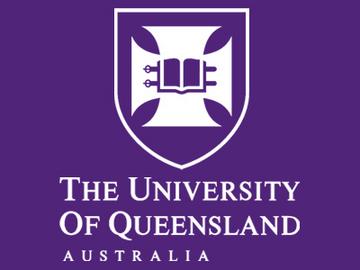




June marks the end of Semester 1 teaching at UQ. This semester, our Masters students undertook their first occupational hygiene classes. I’d like to thank all those fantastic volunteers who helped to make this happen and contributed to the students’ learning this Semester, including:
Michael Shepherd, who impressed the students with his entertaining and engaging practical demonstrations on asbestos sampling and identification, as well as pump back flow checks and calibration
Dr Ross Di Corleto, who passed on his wealth of knowledge and expertise in all things sampling, giving up a day of his time to help the students
Dr Peter McGarry, who assisted students in conducting smoke testing and face velocity checks as part of testing chemical fume cupboards, and gave guidance to students on all things gas and vapour exposure monitoring.
Brian Logan, stepped in and saved the day when extra help was needed with teaching respirator fit testing – thanks, Brian
Noel Pinkerton and Brad Geinitz who entertained the students, as always, passing on their experience and knowledge in all things dust and metals sampling.
Greg Roehrig from Airmet, who provided an interesting and engaging presentation on direct reading instruments for gases and vapours.
I’m sending all the volunteers a virtual round of applause for their ongoing support of the UQ program in Occupational Hygiene.
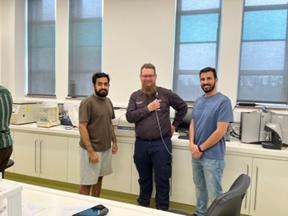


Considering your next Career Move, why not Advance Your Career with UQ’s Masters Programs in Occupational Hygiene and OHS
Are you ready to take your expertise in occupational hygiene and workplace health and safety to the next level? The University of Queensland (UQ) offers world-class postgraduate programs designed to equip professionals with the knowledge and practical experience needed to thrive in the industry.
UQ’s Master of Occupational Hygiene (18 months full-time equivalent) and the Dual Master of Occupational Hygiene/ Occupational Health and Safety Science (24 months full-time equivalent) provide Commonwealth-supported places for domestic students and are accredited by both the Australian Institute of Occupational Hygienists (AIOH) and the Australian Institute of Health and Safety (AIHS).
PhDSuccess:

RichardLeunghasofficiallyfinishedhisPhDonthepsychologicalandphysiologicaleffectsof hearingandrespiratoryprotectionintheworkplaceandwillgraduateonMonday,14 July–photostocome.AbigcongratulationstoDrRichardLeung.
th
AmelieReitmayerhascompletedherexaminationofherthesistitled“Rethinkingoffice temperatures:Temporaleffectsofdynamiccoolingoncognitiveloadandperformance”andwill soonbecomeDrAmelieReitmayer,completingherthesisinrecordtime–congratulations Amelie.
Ourstudentscontinuetocontributetothefield.Recentpublicationsinclude: Johnson,L.,&Johnstone,K.(2025) Astudyofworkerisofluraneexposurelevelsin Australianveterinaryworkplaces.JournalofOccupationalandEnvironmentalHygiene,1–10. https://doi.org/10.1080/15459624.2024.2439808
TM
Reitmayer,A.,Koth,S.C.,Kobas,B.,Johnstone,K.R.,Cook,M.M.,Madigan,C.,&Auer,T. (2025) Effectsofdynamicthermalconditioningoncognitiveloadandperformanceinanoffice environment.AppliedErgonomics,122,104395. https://doi.org/10.1016/j.apergo.2024.104395
Students gain hands-on experience through interactive practical classes, case studies, and field visits led by certified occupational hygienists.
Guest lecturers from industry, including experts from Workplace Health and Safety Queensland, Simtars, and 3M, provide real-world insights.
Our students and faculty are actively engaged in research that tackles emerging workplace hazards.
Recent student projects have explored topics such as exposure to welding fumes, respirable crystalline silica in mining, and chemical hazards in cleaning occupations
Designed to accommodate working professionals, our programs offer a mix of online learning and inperson practical sessions.
For more information about studying occupational hygiene at UQ visit our website: Master of Occupational Hygiene Dual Master of Occupational Hygiene / Occupational Health and Safety Science
Contact the Program Director – Associate Professor Kelly Johnstone School of the Environment, Faculty of Science
The University of Queensland
E: k.johnstone2@uq.edu.au P: +61 7 3346 7816

levels of the organisation A lack of a robust communication network can lead to failures in sharing important information, with potentially devastating consequences for individuals and workers (Cameron, 2024).

When managing chemicals, health and safety practitioners heavily rely on information provided by manufacturers or suppliers. This information outlines the dangers of handling, storing, and transporting hazardous substances, as well as the necessary safety precautions workers should take to protect themselves and others. It also includes procedures to follow in the event of a spill, exposure, or fire. However, the hazard communication tool known as the Safety Data Sheet (SDS) has often been criticized as a flawed document. The predecessor to the SDS, the Material Safety Data Sheet (MSDS), faced significant scrutiny regarding its accuracy, readability, and comprehensibility (Eastlake , et al., 2011; Hodson et al , 2019; Eastlake et al , 2012; LeBouf et al , 2018; Phillips et al , 1999)
Medical professionals have raised concerns about whether the MSDS effectively conveys the medical consequences of chemical exposure (Bernstein, 2002; Greenberg et al., 1996). Many stakeholders including those working with chemicals, providing expert advice, and regulatory bodies hoped that the introduction of the Globally Harmonized System for the Classification and Labelling of Hazardous Chemicals (GHS) would ensure consistency in chemical classification, improve readability, and eliminate vague language in favour of a more straightforward approach. Eight years after the adoption and implementation of the GHS in Australia, the question remains: Are workers and health and safety professionals better equipped to communicate the hazards associated with handling hazardous chemicals and dangerous goods?

Research conducted as part of a PhD program found that, despite efforts to harmonise both the structure of the SDS and the classification of hazardous chemicals, it has fallen short in certain respects, particularly regarding content and context. To grasp the significance of the SDS, it is important to recognize that it is not only a legally required document detailing scientific information but also a valuable resource for workers handling chemicals throughout their lifecycles. Emergency services personnel and first responders require clear communication regarding hazards and emergency responses before addressing a worker's needs, managing a chemical spill, or extinguishing a fire.
Although the SDS is often authored by chemists, toxicologists, or safety professionals, numerous companies are now developing software programs to assist in creating customized Safety Data Sheet documents. Using a common chemical substance such as liquid nitrogen highlights the challenges faced by workers and health and safety professionals. In Australia, there are only a few producers of liquid nitrogen; therefore, minimal variation between suppliers might be expected. However, this was not the case.
While health and safety professionals are generally familiar with several well-known physical properties of nitrogen in its liquid state, some basic information appears to have been overlooked in favour of more detailed and complex information that is often irrelevant in workplaces "Red flags" emerged in the form of non-GHS precautionary statements, irrelevant first aid advice related to exposure to liquefied petroleum gas, multiple references to compressed nitrogen and gas cylinders, and a 20-degree Celsius discrepancy in the recommended ambient storage temperature for portable liquid nitrogen containers These discrepancies suggest that those authoring the SDS may not fully understand how misinformation can impact the ability to conduct an informed risk assessment. Statements such as "consideration should be given to the possibility that overexposure to materials other than this product may have occurred; try to stop release; stop the flow of gas if safe to do so while continuing cooling water spray; or avoid heat, sparks, open flames, and other ignition sources" can lead workers to several potential actions that may jeopardise their health.
In many cases, the SDS is written by production chemists, toxicologists, or safety professionals; however, many companies offer self-authoring software to facilitate this process. With the rise of AI technology in both our personal and professional lives, questions arise regarding the accuracy of AIgenerated safety data sheets
At this juncture of the research project, it is clear that misleading and/or inaccurate SDSs impact the ability of workers to undertake an informed risk assessment. One of the biggest challenges is countering misinformation and correcting erroneous information. WHS regulators often cite the SDS as being a key resource in the development of risk assessments and the management of chemicals in the workplace. How does the safety professional credibly counter the misinformation.
If you have an interesting student research piece, please contact marketingchair@aioh.org to potentially have your article shared in the next Filter edition.




As we reach the midpoint of 2025, it’s the perfect time to pause and reflect on the momentum we’ve built and the milestones we’ve achieved together in the field of Occupational Hygiene
From advancing research that safeguards workers health to fostering the next generation of professionals through our Postgraduate courses and PhD programs, the first half of the year has been rich with progress and purpose! We’ve seen exciting developments in exposure science, workplace risk assessment, and collaborative projects that are already making a tangible impact.
Whether you’re a long-time contributor or new to our community, thank you for being part of this journey. Let’s carry this energy forward into the second half of the year with renewed focus and shared purpose
Dr Adèlle Liebenberg
Course Coordinator
ECU Postgraduate Occupational Hygiene Courses
At Edith Cowan University (ECU) our research is more than academic it’s a catalyst for real-world change Partnering with industry and government, our projects tackle pressing occupational health challenges, ensuring our students and researchers contribute to healthier, safer workplaces and stronger communities


In collaboration with the WA Department of Energy, Mines, Industry Regulation and Safety (DEMIRS), ECU researchers are analysing one of the world’s largest occupational exposure databases. With nearly 600,000 data points, the Safety Regulatory System (SRS) offers a unique lens into historical exposure trends. Our findings are shaping recommendations for compliance with updated workplace exposure standards for welding fumes, diesel particulate matter, and respirable crystalline silica critical for the future of mining safety in Western Australia

ECU is also leading the way in firefighter health research, with three new projects providing scholarship opportunities:
This project assesses exposure to volatile organic compounds, asbestos, and particulate matter during post- fire investigations The findings will help to shape safer practices and regulatory standards.
Our PhD candidates are leading innovative projects that address emerging risks in occupational health:
• Venessa Thelan is rethinking asbestos sampling. Her work explores faster, more accurate methods to detect asbestos fibers in dust-heavy environments, vital for preventing future disease.
• Matt Oosthuizen is investigating the complexities around chemical exposures of researchers, teaching staff and students in a university setting
• Greg Hewson is examining thorium dust exposure in WA’s mine workers His research aims to refine radiation exposure models and improve biospecimen testing for long-term health monitoring
• Ben Welsh is validating real-time monitoring equipment By comparing conventional and modern samplers in active mining sites, his study will guide industry adoption of more effective exposure assessment tools.
• Melinda Gardner is looking into the microbial elements of lithium dust exposures
Thisstudyaimstosimplifyexposureassessmentsby exploringwhetherspecificchemicalmarkerscanpredict overallexposure Thegoalissmarter,morecost-effective healthsurveillance
Employingqualitativemethods,thisresearchidentifies culturalandorganisationalbarrierstotheuseofprotective equipment Theoutcomewillbetailoredstrategiesto enhancesafetycomplianceandhealthoutcomes.

Are you passionate about occupational health and hygiene research? ECU is offering PhD scholarships for outstanding candidates to join these impactful projects
Shape the future of workplace health. Apply now.

For more information please contact:
Prof Jacques Oosthuizen j.oosthuizen@ecu.edu.au
Dr Adèlle Liebenberg a.liebenberg@ecu.edu.au
Dr Kiam Padamsey k.padamsey@ecu.edu.au


Dr Jane Whitelaw

FAIOH, Certified Occupational Hygienist (COH) , CIH ® ®
It’s hard to believe it is over 6 months since the last AIOH conference and only 6 months until AIOH25 in Sydney! Our final-year students are working hard on their capstone Workplace projects and gearing up to present at the conference, and many were on campus for the last time in May for 3 days of practicals and networking for our Occupational Hygiene Control subject. Here’s a glimpse of what we got up to:
Andrew Orfanos represented us at last week at the NZOHS Conference, presenting an outline of his PhD research into the effect of smelter emissions on worker lung function. He aims to identify the relationship between smelter emissions and changes in worker respiratory function; and explore whether sensitive changes such as airway inflammation and ventilation heterogeneity can be identified in an industry cohort using novel techniques Stay tuned for an update at AIOH25.
We have a vacancy for a Lecturer/Senior Lecturer in OHS/OH. If you’d like to make a difference in the future of our profession and have the time to develop your research ideas, please consider joining our experienced and dynamic team.

Soraya displaying how unseen contamination spreads if not controlled at the source.


Did you know our Master of Occupational Hygiene holds dual accreditation with AIOH & BOHS? Give yourself the best educational foundation for professional practice and becoming a COH by enrolling in our accredited program. If you missed the new University year you can apply now for a Spring (July) commencement. If you have completed the AIOH Basic Principles Course and have workplace experience, you might choose to get started with a Graduate Certificate in Occupational Hygiene.
Commonwealth Supported Places are available for domestic students, making study very affordable. E.g. a Full Masters Degree costs under $9,500 in fees and can be completed on a full-time or part-time basis.
Our courses integrate practical hands-on time and networking with leading COHs to focus Occupational Hygiene techniques and application of skills and knowledge to a broad range of workplace issues; AND our support and networking is legendary!
Contact Jane Whitelaw for more information.


The Master of Occupational Hygiene uses science and engineering to measure the extent of worker exposure to physical, chemical and biological workplace hazards Using science and engineering you will design and implement appropriate control strategies to prevent ill health caused by the working environment.
The Master of Occupational Hygiene will provide you with an intensive professional program of study in the area of occupational health and safety. It will equip you to anticipate, recognise, evaluate and control the risks from workplace physical, chemical and biological hazards; and communicate these to employers and employees to promote improved working conditions and practices.

As the world of work continues to evolve, so too does the vital role of occupational hygiene in safeguarding worker health and wellbeing Across the globe, leading organisations are stepping up with fresh ideas, bold initiatives, and collaborative efforts that reflect the dynamic challenges of our time These updates provide a snapshot of the international occupational hygiene community in action, advocating, innovating, and championing health where it matters most: at work

If you are going to EXPO 2025 in Osaka, Japan the IOHA will be presenting and exhibiting as part of the Global Initiative for Safety, Health, and Wellbeing. The presentations will focus on the future of work and the challenges and opportunities of occupational hygiene in advancing worker health into the future
Jan-Mar 2025 edition Global Exposure Manager (GEM) has been released with articles considering the Expanding Role of Occupational Hygienists in a Changing World of Work which considers the how social and financial expectations of companies in relation to the human sustainability of the work they conduct An article on control banding provides an informative overview of the topic specifically in relation to the management of chemical risks For some fun and creativity there is a piece on the Occupational Hygiene Chronicles a comic strip which is a great awareness communication piece on hygiene in the workplace and wider society.

The BOHS has been involved in a number of initiatives and outreach since late 2024 to 2025. The BOHS has been involved in a report on women’s workplace health “The UK’s Hidden Crisis in Women’s Workplace Health” The BOHS asserts through the report that women are unfortunately having higher rates of long-term sickness, worse health outcomes in most exposure categories including MusculoSkeletal Disorders (MSDs) and mental health. It also notes the UK Health Safety Executives (HSE) highest predicted cancer is breast cancer is associated with night shift work and includes other negative health issues such as premature menopause and miscarriage. A significant barrier for women is raising health concerns at work, due to the uncomfortable and personal nature of these health concerns
The BOHS is preparing for OH2025 The Workplace Health Protection Conference will be in Newcastle UK (June 16-19) will focus on innovation in workplace health.

The AIHA continues to advocate for the reinstation of the full functionality of the National Institute for Occupational Safety and Health (NIOSH) with a nationwide campaign in the USA.
In April the AIHA released the 2025 update to it Grand Challenges for Worker Health, Safety, and Well-being. The Grand Challenges identify challenges in the field of worker health, safety, and well-being which if accomplished would significantly reduce occupational injuries, illnesses, and fatalities and improve workers’ quality of life. Four challenges were decided as areas which filled this purpose:
The Changing Work Environment
Promoting Health Equity and Eliminating Precarity in the Workplace
Improving Exposure Assessment
These challenges were approved by the AIHA Board of Directors in February 2025 after four years of development of the Grand Challenges project and now looks at the next steps of addressing these challenges.
Season 4 of The Healthier Workplaces Show is ready to stream. The podcast looks at a wide range of Occupational Health and Safety topics and run for approximately 20 minutes each. Recent topics include Episode 61 Supporting Women in IH, Episode 62 – Technical Guide to Wildfire Impact Assessments for the OEHS Professional and Episode 63 Supporting Neurodiversity in the Workplace.

The NZOHS conference for 2025 was held in May considering Challenges, Change, Solutions. The conference was thoroughly enjoyed by those who attended and the rest of us who got to updates through social media networks. There was four Continue Education Sessions followed by a two-day conference program. Hygienists from the AIOH were strongly represented at the conference with several presentations given by AIOH members

Do you have a vision for the future of work and OSH?
The International Labor Organization (ILO) is working on a Strategic Foresight journey to explore, imagine, and shape the future of Occupational Safety and Health (OSH).
In the frame of this effort, ILO just launched the first round of a Delphi survey to collect signals and insights across the Social, Technological, Economic, Environmental, and Political (STEEP) dimensions
Share your vision for the future of work and OSH by completing the ILO survey: https://lnkd.in/dt J7Rdd
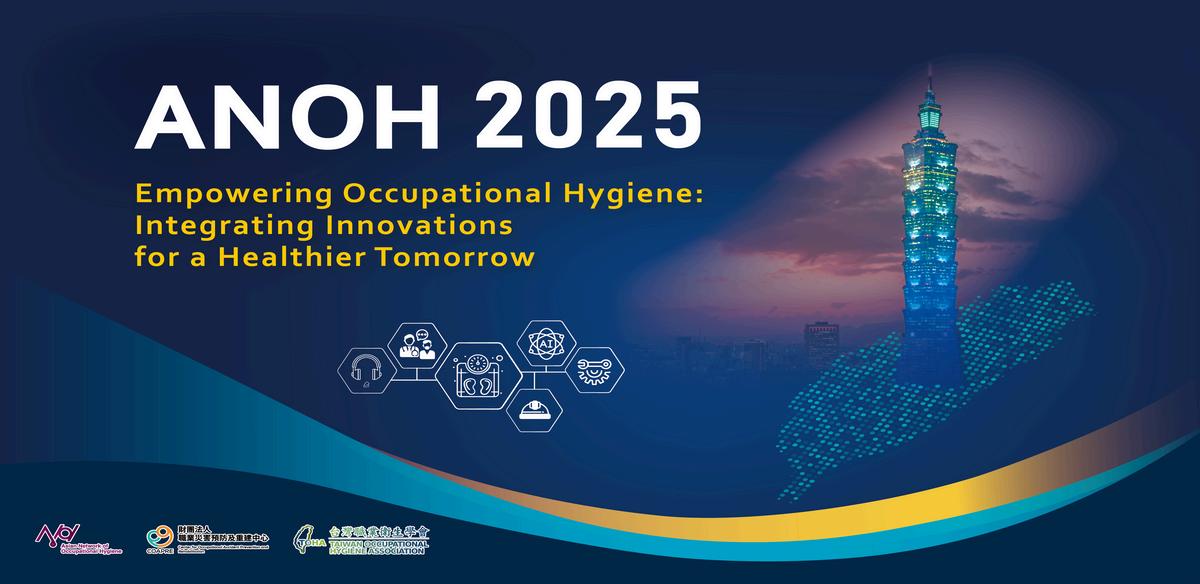


Event:
Dates:
Venues: GISHW Safety, Health and Well-being Days
Wednesday, July 16 – Saturday, July 19, 2025
EXPO 2025 and INTEX Osaka
Registration Fees:
Registration Category with EXPO2025 Admission Ticket Without EXPO2025 Admission Ticket
Regular (after April 1, 2025)
Early-bird *1
Regular (LMIC discount)
Student *2
Special *3
¥150,000
¥120,000
¥90,000
¥60,000
¥33,200
¥90,000 ¥75,200
*1: Early-bird rate applied until Monday, March 31, 2025
*2: Student I D needs to be uploaded
How to register
1 Click on “Registration” on the GISHW website
2.Create your own account
3 Register an accompanying person, if any
4.Payment can be made by credit card
5 Please check Registration Guide
6 Registration Confirmation sheet (with QR code) will be shown after completed registration and payment
*3: A guest with a disability certificate and an accompanying guest (assistance) are entitled to purchase this ticket




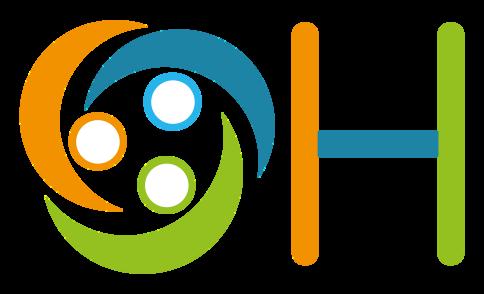
2 0 2 5 TheWorkplace Health Protection Conference

BOHS is offering a Digital Delegate Pass for international members and those unable to attend in person This pass gives you on-demand access to recorded sessions from the full OH2025 programme, including keynote talks, technical presentations, and expert panels
Wherever you are in the world, you can stay up to date with the latest in occupational hygiene and worker health protection - on your schedule
Find out more: wwwbohslink/oh2025


2 0 2 5 TheWorkplace Health Protection Conference
OH2025 is the leading conference for professionals dedicated to improving workplace health Hosted by BOHS, this event brings together experts, researchers, and industry leaders to share insights, innovations, and solutions in occupational hygiene.
Whether you’re early in your career or an experienced specialist, OH2025 offers essential insights and connections to help you stay informed, grow your expertise, and support healthier workplaces.
4-day programme featuring UK and international speakers Keynotes, technical sessions, and panel discussions
Practical workshops and case studies Exhibitor showcase with the latest innovations Networking receptions





The International Occupational Hygiene Association (IOHA) is excited to announce its participation in the Safety, Health, and Well-being (SHW) Days at EXPO2025 in Osaka, Japan, from July 16 – 19, 2025. As a partner of the Global Initiative for Safety, Health & Well-being (GISHW), IOHA will be hosting and participating in several key events designed to advance the field of occupational hygiene. A roadmap for the future of SHW globally will be developed based on outputs from activities and interactions in Osaka!


World Assembly Workshop in partnership with ICOH: Climate Change and the Future of Work
Topics: Health and safety impacts, skills for climate change mitigation and adaptation, just transition, circular economy, green skills and competencies in new technologies, and related risks alongside a new multi-stakeholder framework.

World Assembly Workshop in partnership with INSHPO: The Future of OSH Partnerships and Relationships with Other Professionals Topics: Collaborations among OSH bodies and associations, partnerships with sustainability professionals, ESG analysts, data scientists, HR professionals, finance and insurance stakeholders, and more.

International Symposium Policy Track: Advancing Occupational Hygiene Priorities Globally
International Symposium Practice Track: Advancing Social Sustainability through Occupational Hygiene


To make this event more accessible there are discounts for registered students and IOHA members:
60% discount for officially registered student members
30% discount for all other IOHA members
To get the IOHA member discount, please use the IOHA Organization Code: H7RMF For more details and to register, please visit the GISHW website.



Want to Stay Ahead with Cutting-Edge Research?
Access the latest advancements in occupational health and hygiene! Discover international symposiums and presentations, covering new research, regulatory updates, and best practices from international experts shaping the future of workplace health and safety.


Are you looking to Expand Your Global Network?
Join professionals from IOHA member organizations and GISHW partners worldwide! Collaborate on emerging issues, exchange ideas, and build meaningful connections Kick things off in style at the Welcome Reception on July 16th!

Curious About Global Trends in Occupational Health & Safety?
Be part of the International Symposium and World Assembly, where experts discuss the latest challenges and innovations. Gain insights, explore solutions, and take your expertise to the next level!
Want to Immerse Yourself in Japan’s Vibrant Culture?
Experience the rich history, leading- edge technology, and unique culinary delights of Japan. Attending EXPO2025 offers a rare opportunity to immerse yourself in a culturally rich environment, broadening your global perspective
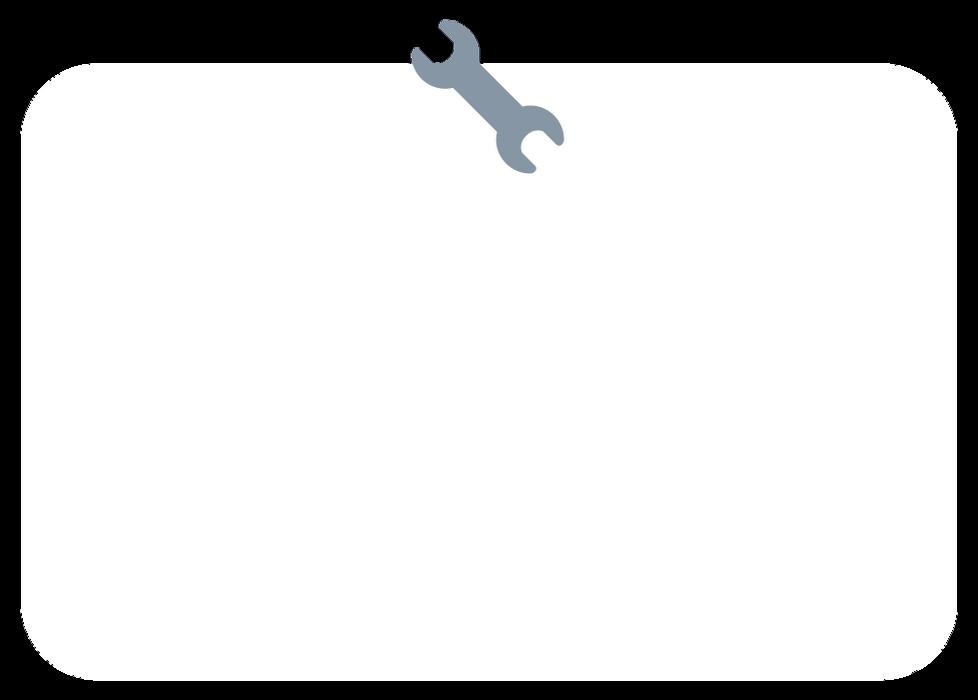
Excited to See the Latest Tech in Action?
Engage with exhibitors showcasing the latest tools and equipment to improve work practices and enhance workplace safety


Date/Time: July 3, 2025 – 0700 to 0830h EDT; 1900 to 2030h AWST, 1300 to 1430h CEST, 1630 to 1800h IST
Fees: Complimentary to all members of IOHA Associations. IOHA is a not-for-profit organization so please consider donating through the QR code below if you are not a member or from a for-profit industry. 80£ for industry-sponsored and for-profit organization participants
We are in challenging times. Times that require our resolve to stay the course on behalf of the people we serve and identify and implement innovative solutions. Times that require growth and change in occupational health and hygiene. Why? Our current strategies, systems, models, and approaches are not working. Around the globe and locally, we are not effectively preventing chronic non-communicable occupational disease. We need to do things differently. The time is upon us for innovation including new ways of thinking. What does innovation in occupational health and hygiene look like? It includes integrated, holistic approaches, impactful partnerships, it is silo free, it is meaningful investment in workers, families, and communities – investment in prevention and wellbeing, and it is aligned with efforts in social sustainability and the United Nations Sustainable Development Goals and other important strategies to future proof our world and its people– such that we leave no one behind. Together, let’s drive change in occupational health and hygiene.

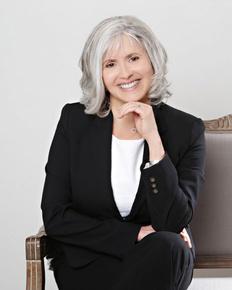
Nancy Wilk is President of the International Occupational Hygiene Association (IOHA) and IOHA Board Director on behalf of the American Conference of Governmental Industrial Hygienists (ACGIH). Practicing comprehensive occupational hygiene since 1987, Nancy is a Senior Technical Director, EHS and Industrial Hygiene with WSP Canada Inc. located in Ontario, Canada. She is a Registered Occupational Hygienist with CRBOH, a Certified Industrial Hygienist with BGC (ABIH) and an AIHA Fellow. Nancy has received the 2024 ACGIH Meritorious Achievement Award, a 2023 Canadian Institute of Mining, Metallurgy and Petroleum (CIM) Distinguished Lecturer Award for bring Total Worker Health® approaches to the mining sector, the 2022 AIHA Women in Industrial Hygiene Aileen Yankowski Outstanding Leader of the Year Award, and the 2020 Occupational Hygiene Association of Ontario Hugh Nelson Award of Excellence in Occupational Hygiene. Nancy has a Master of Health Science degree specializing in Occupational Hygiene from the Faculty of Medicine at the University of Toronto.
Register here: IOHA July 20 25 webinar
Contact for more information: admin@ioha net

